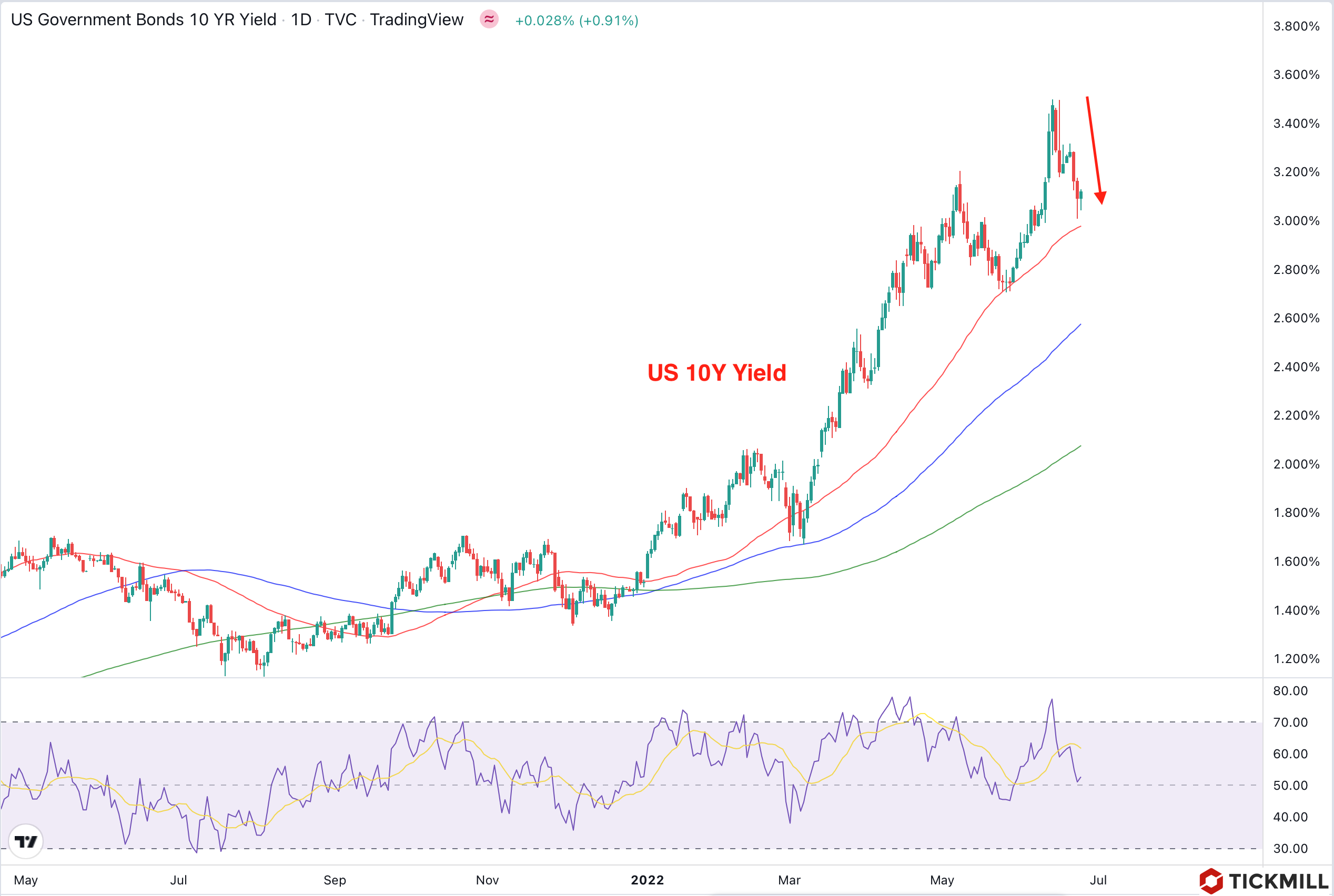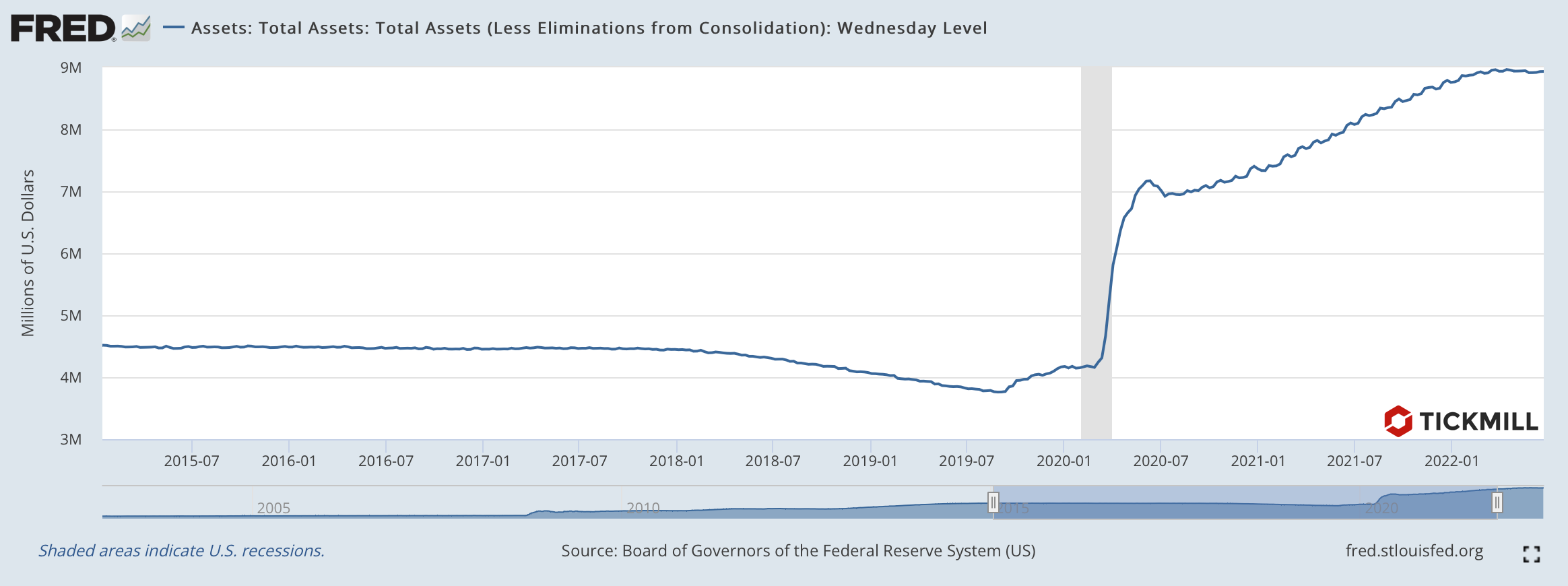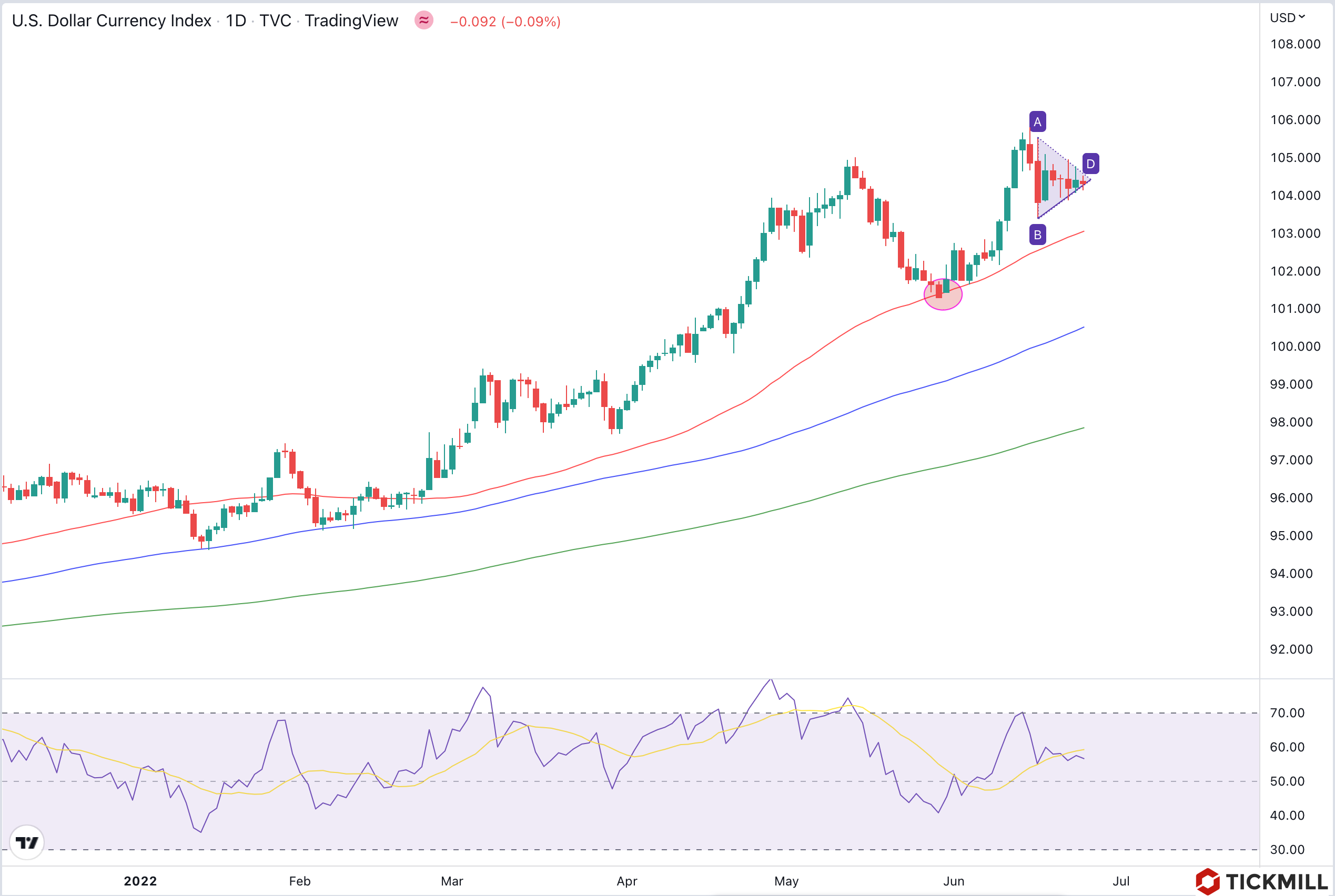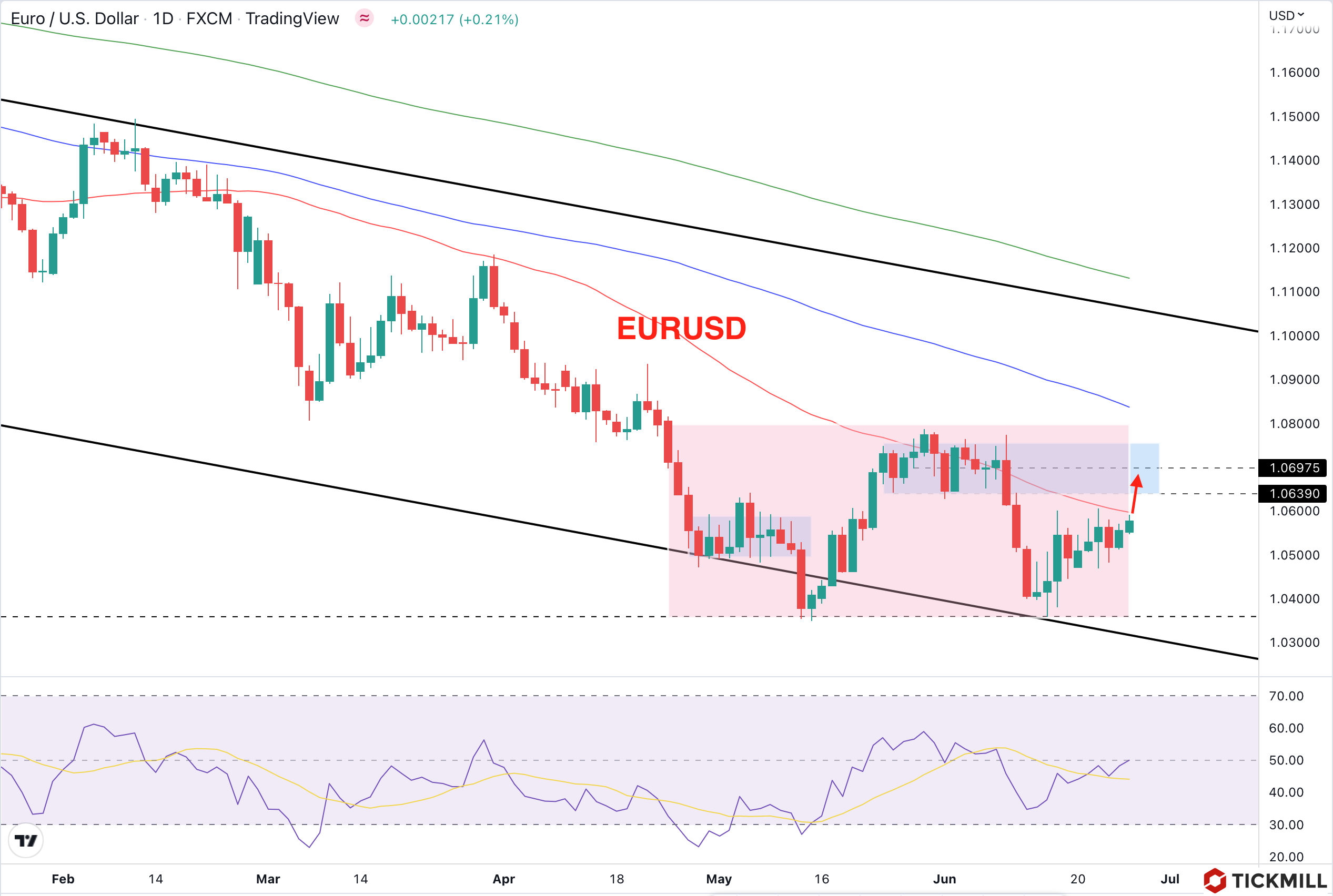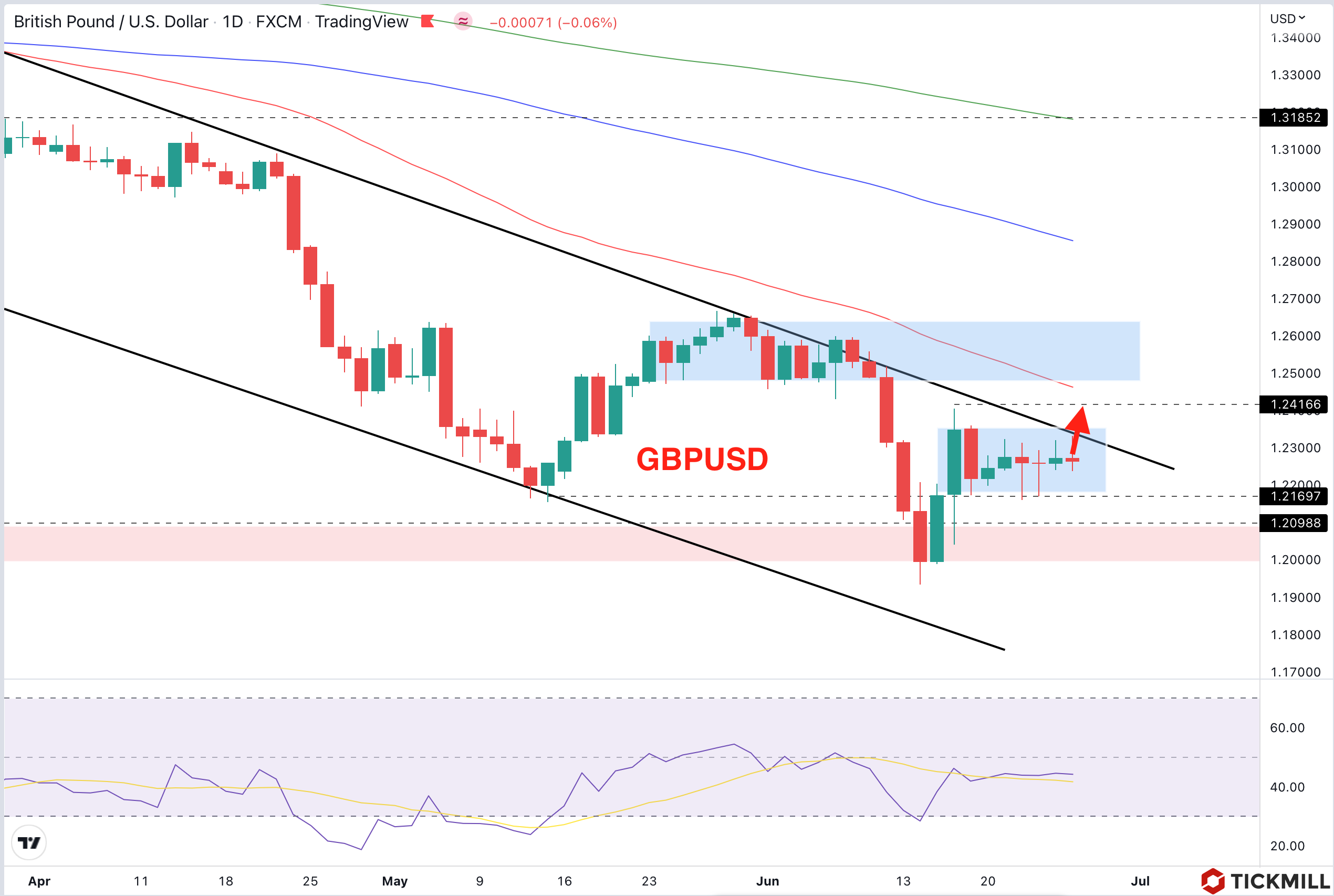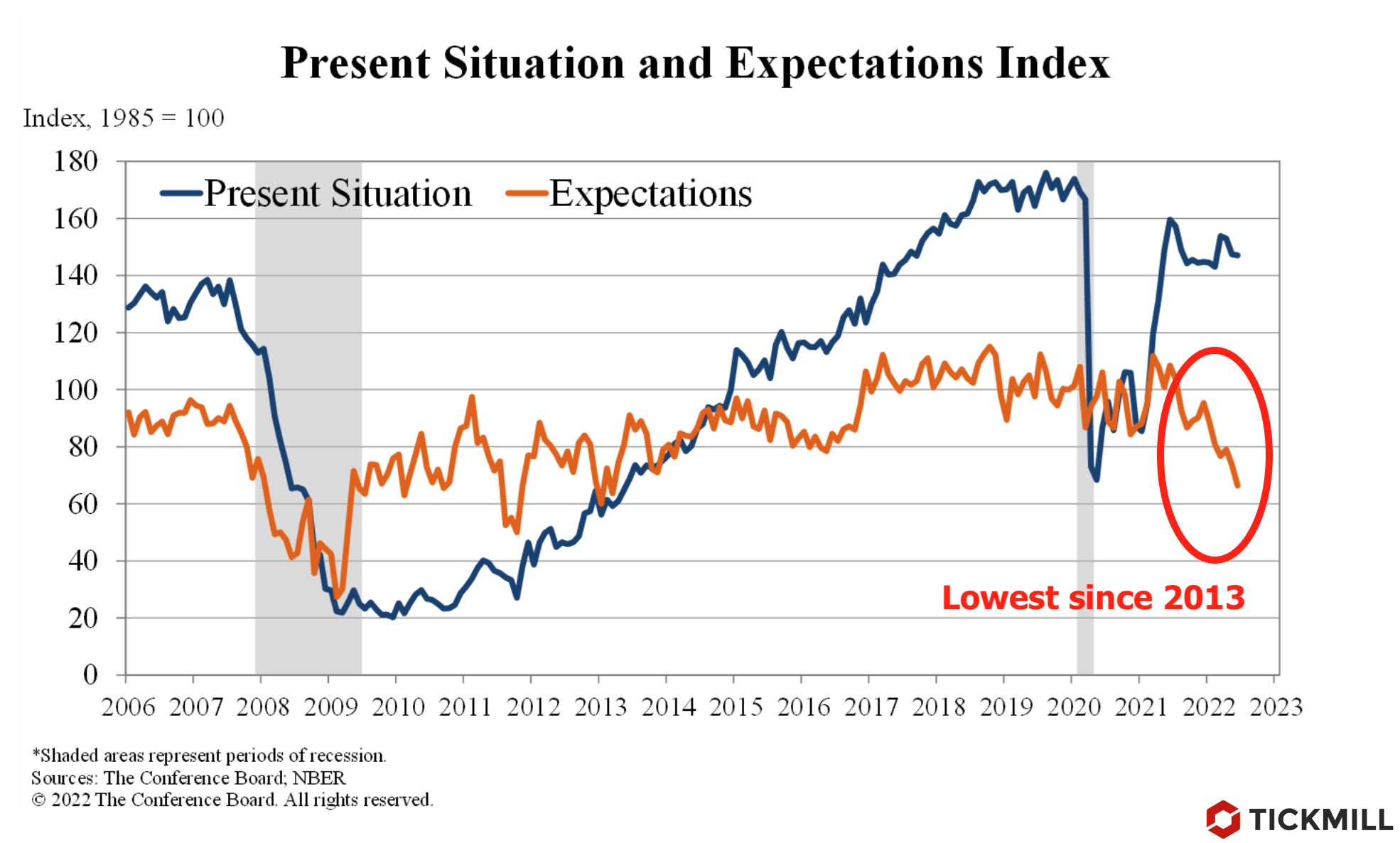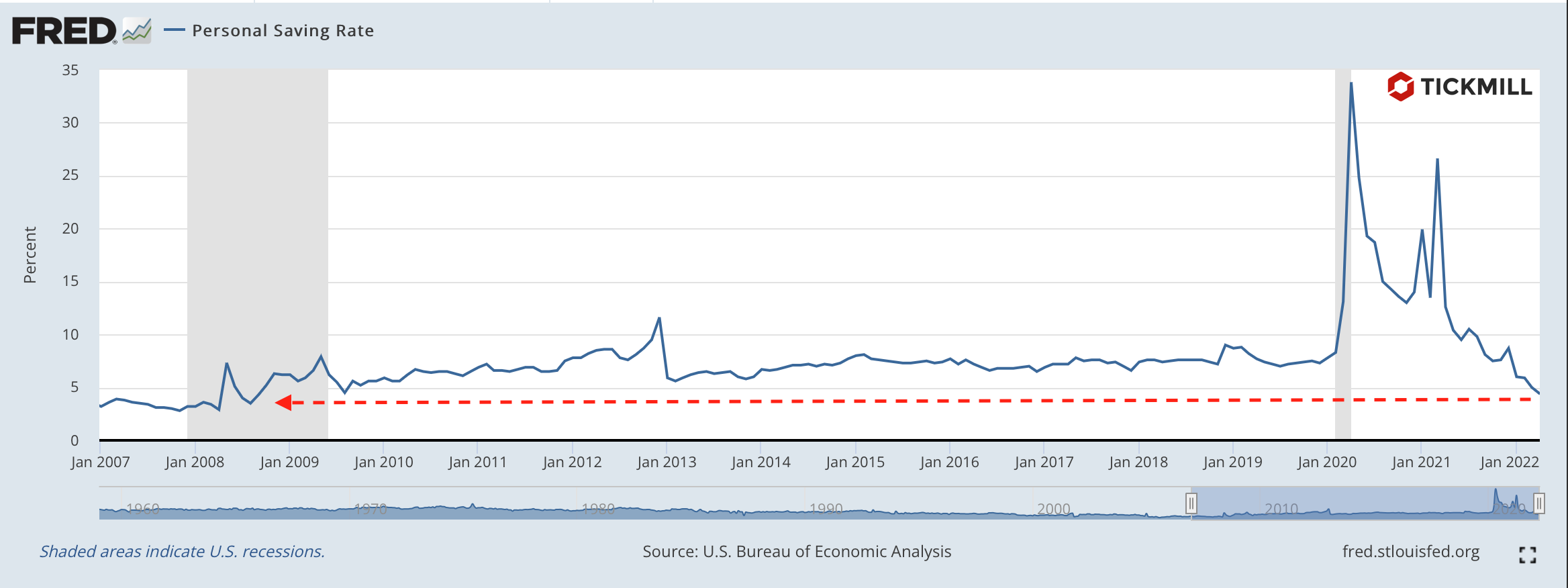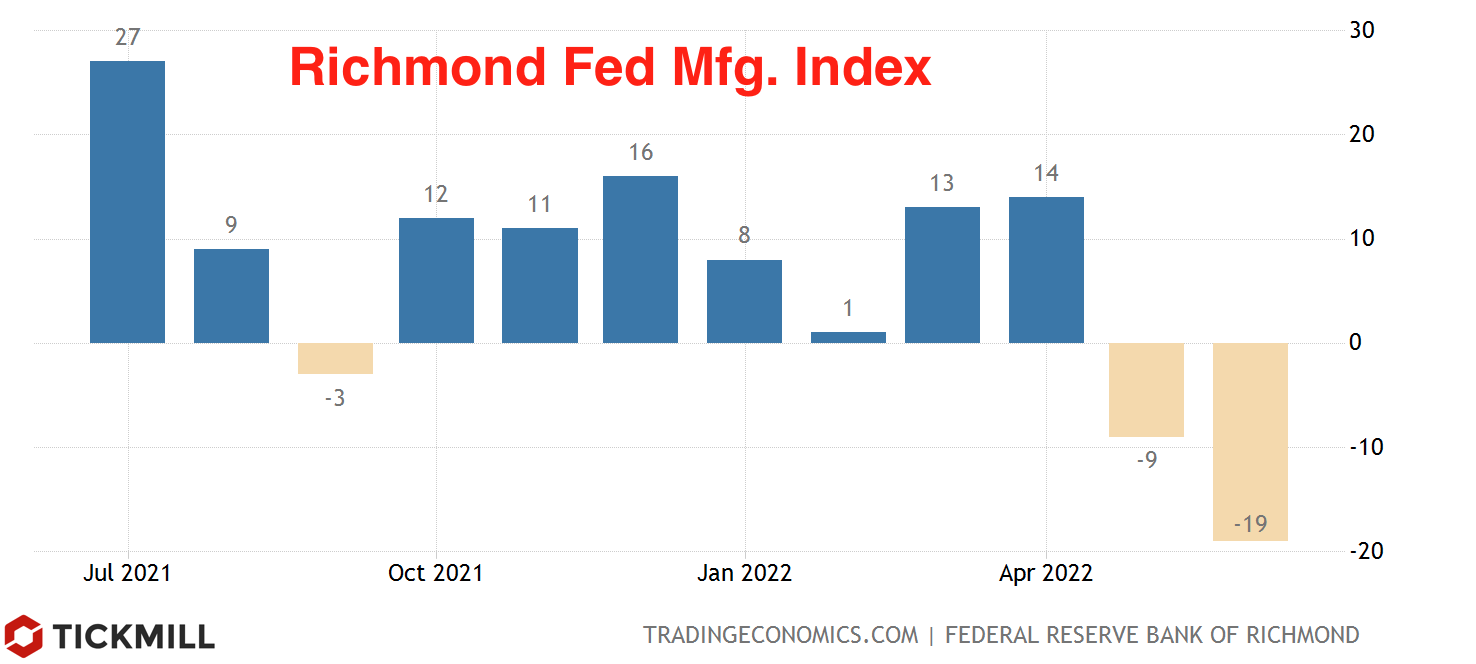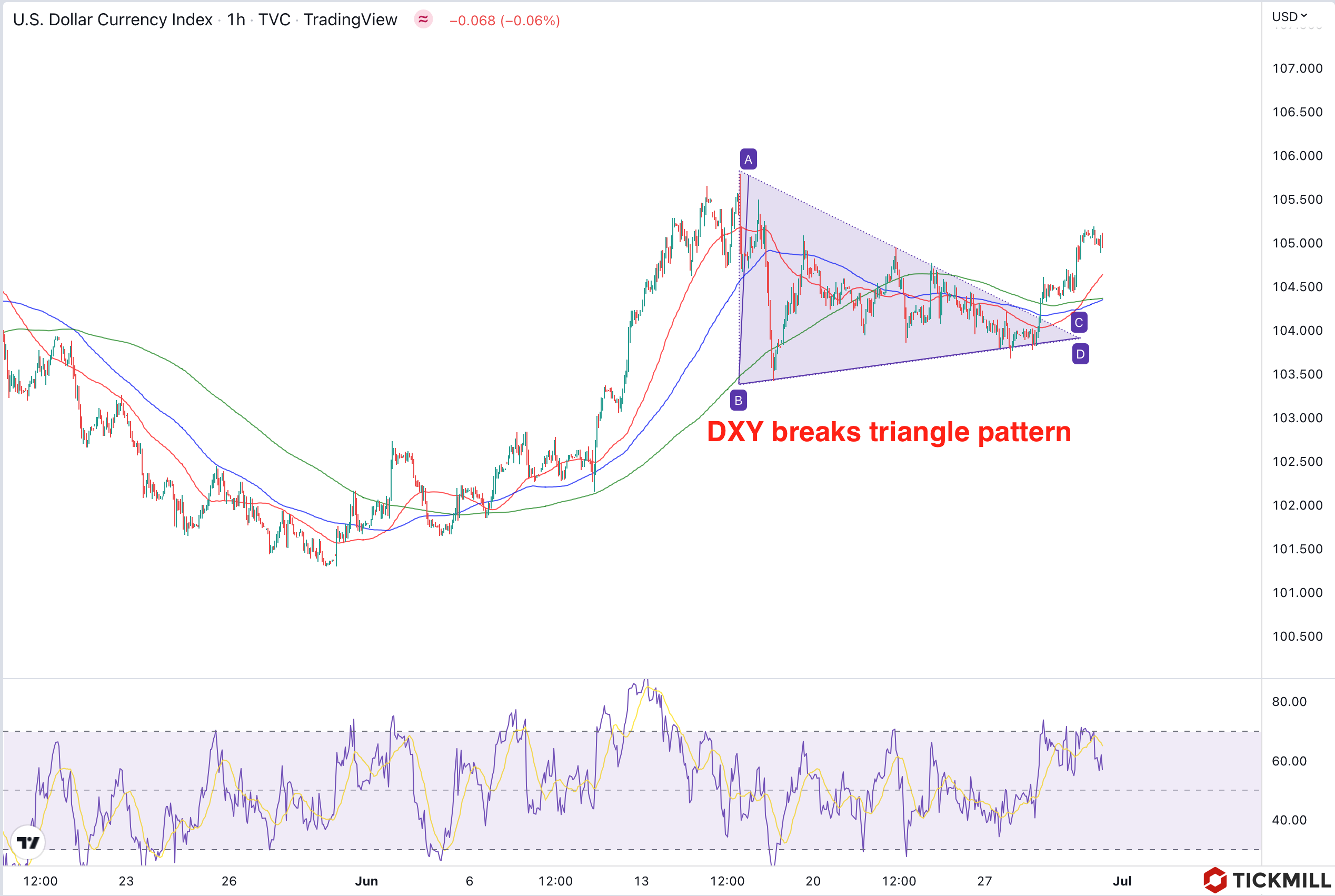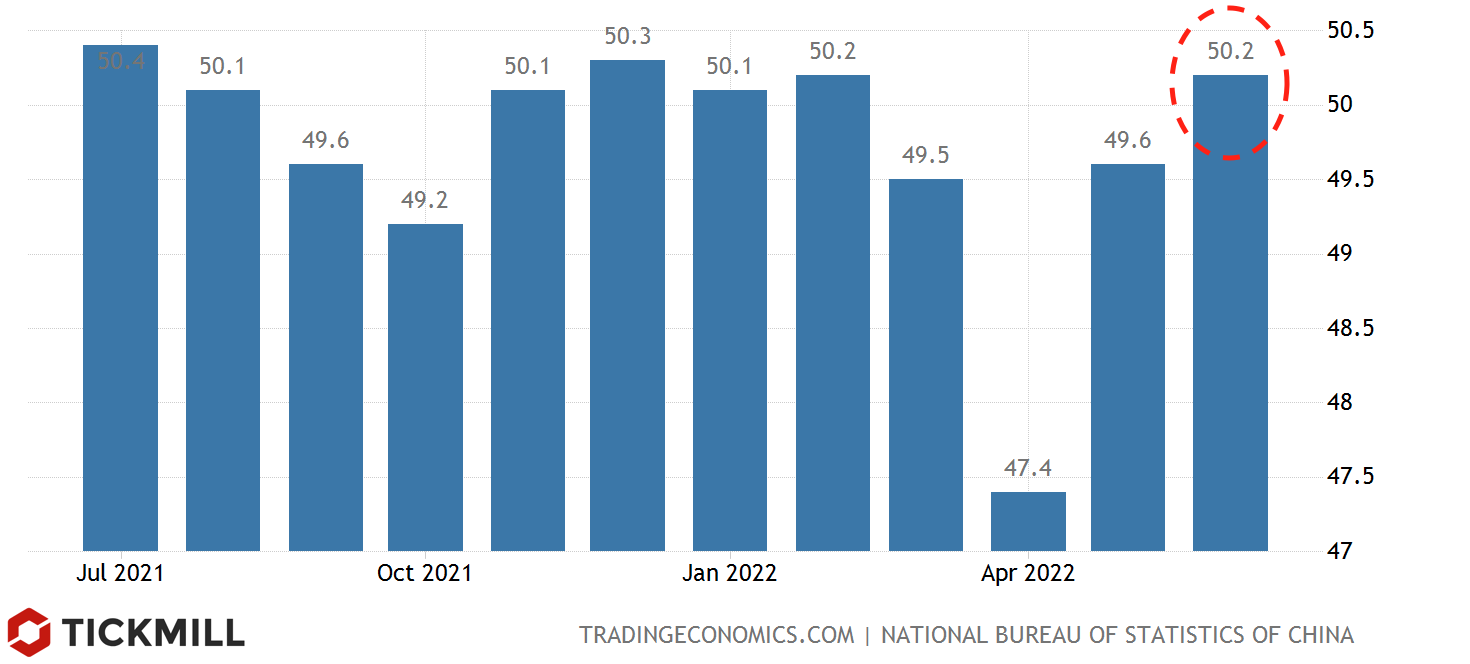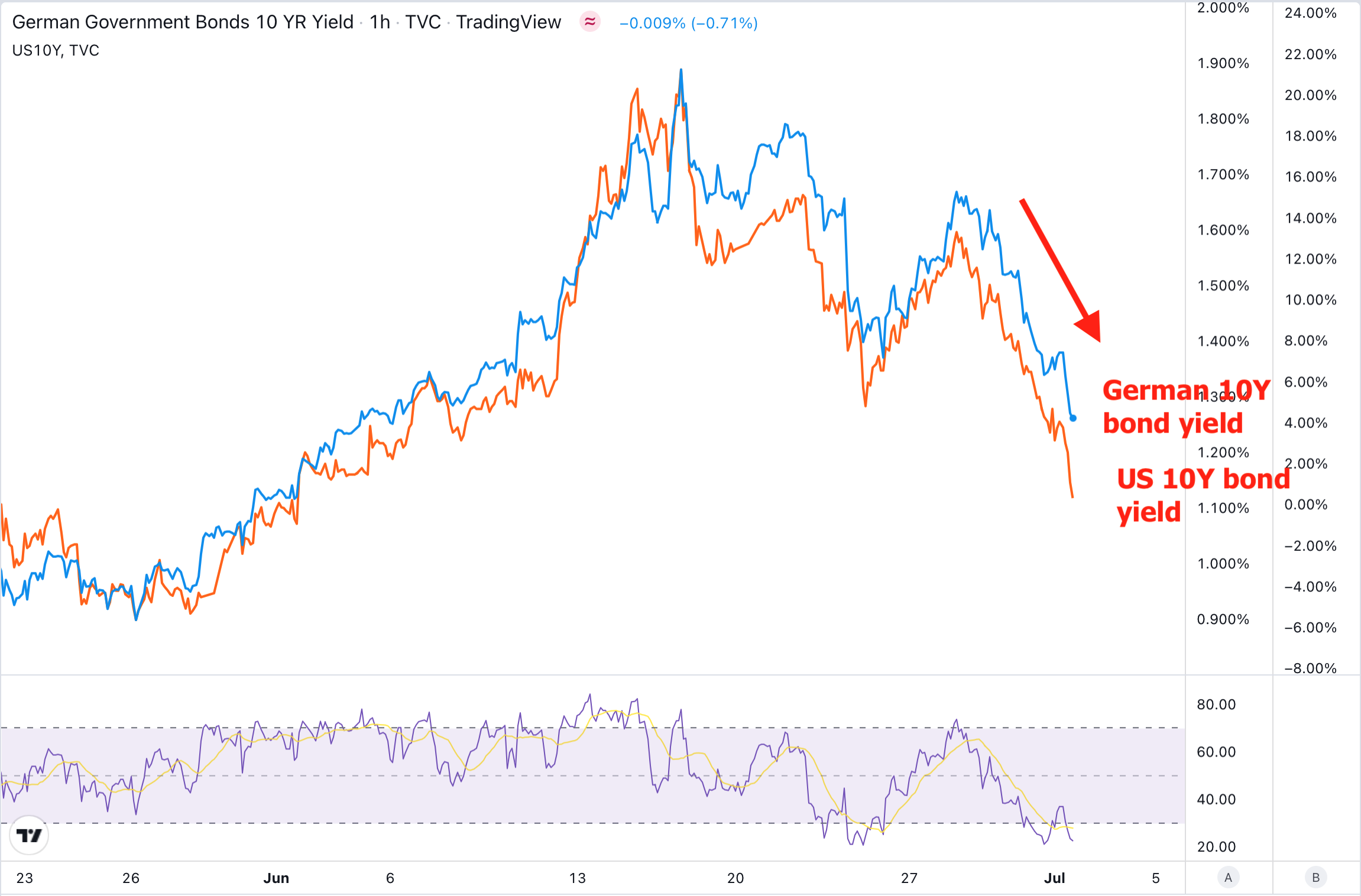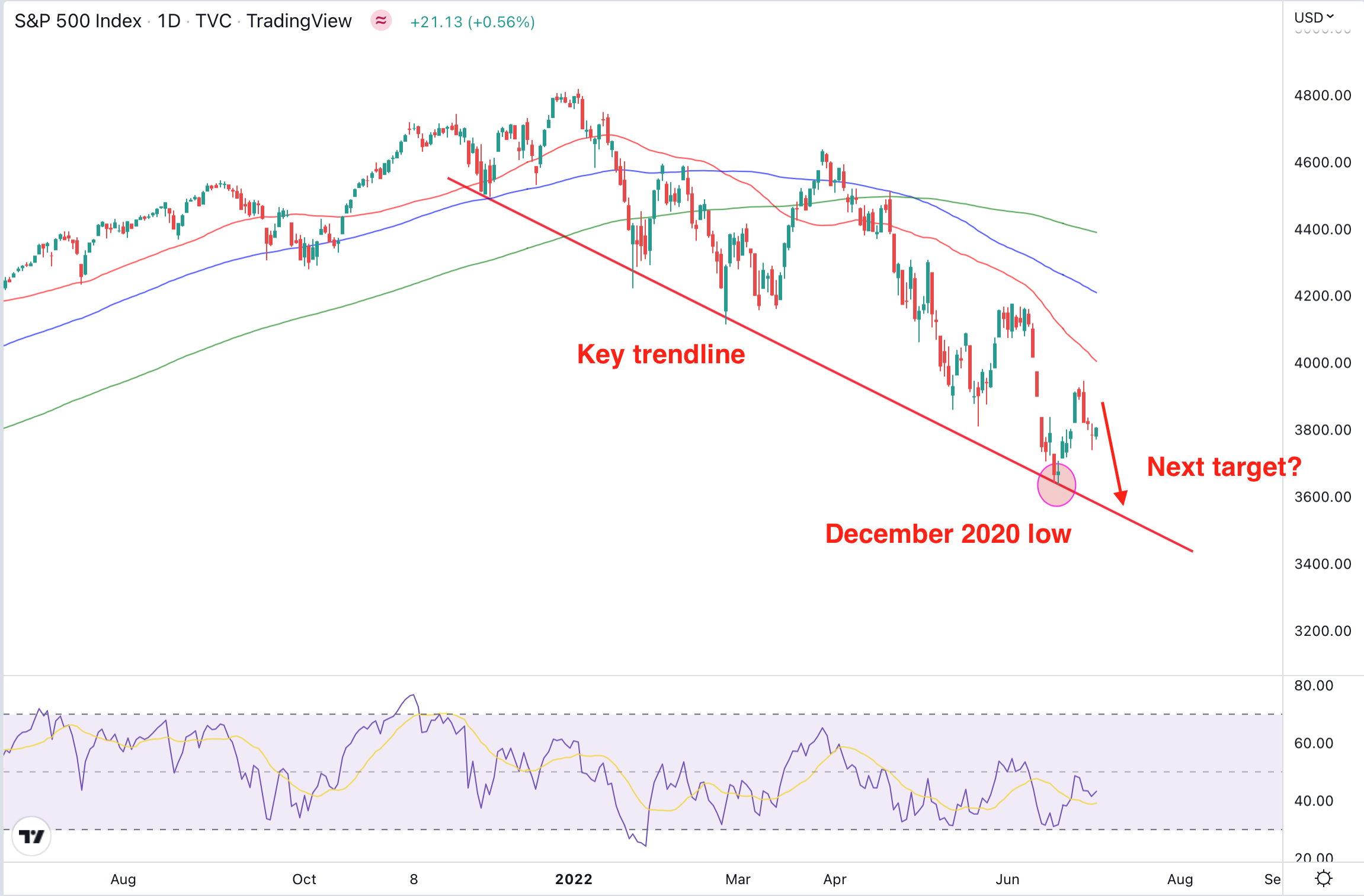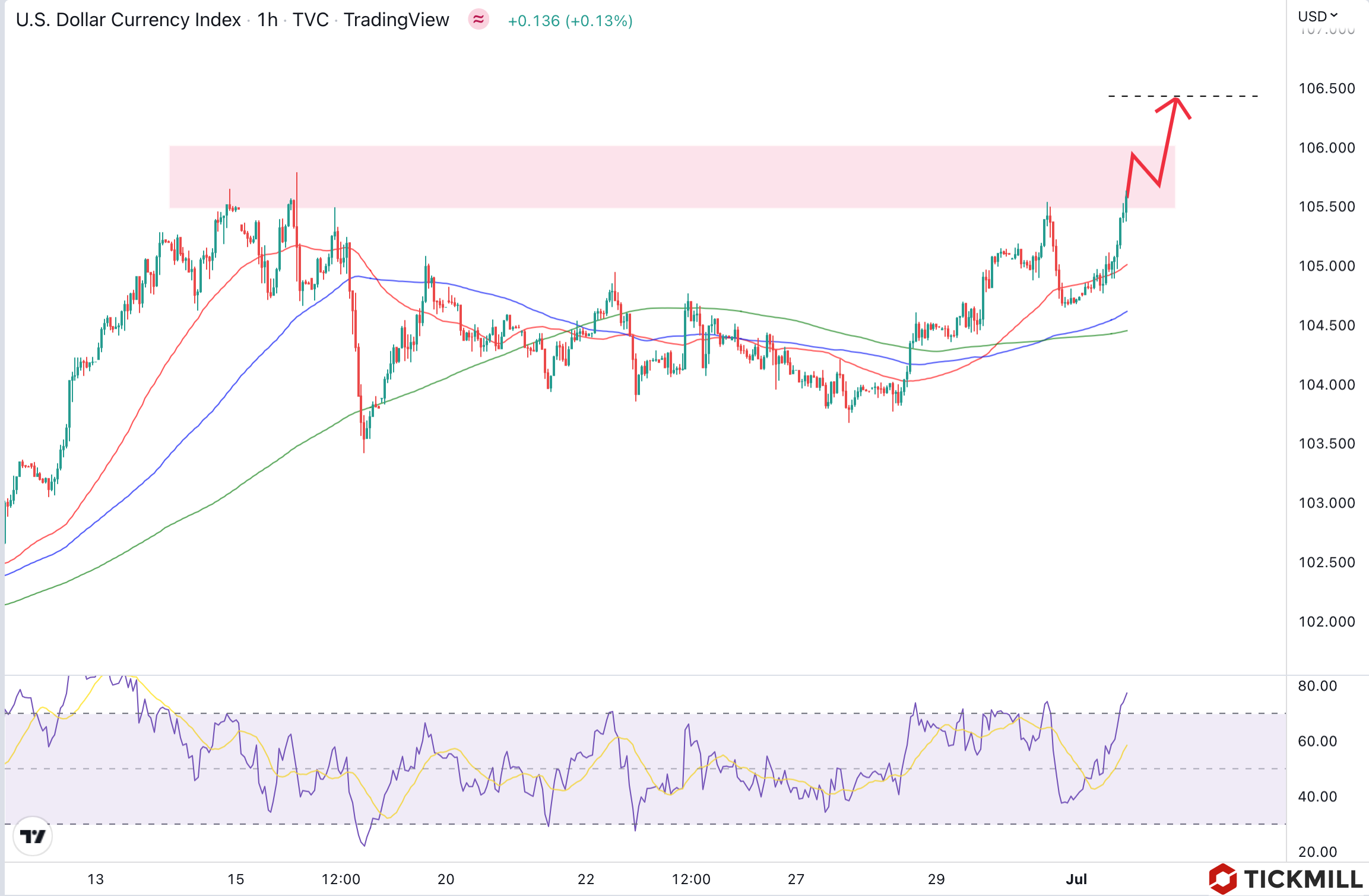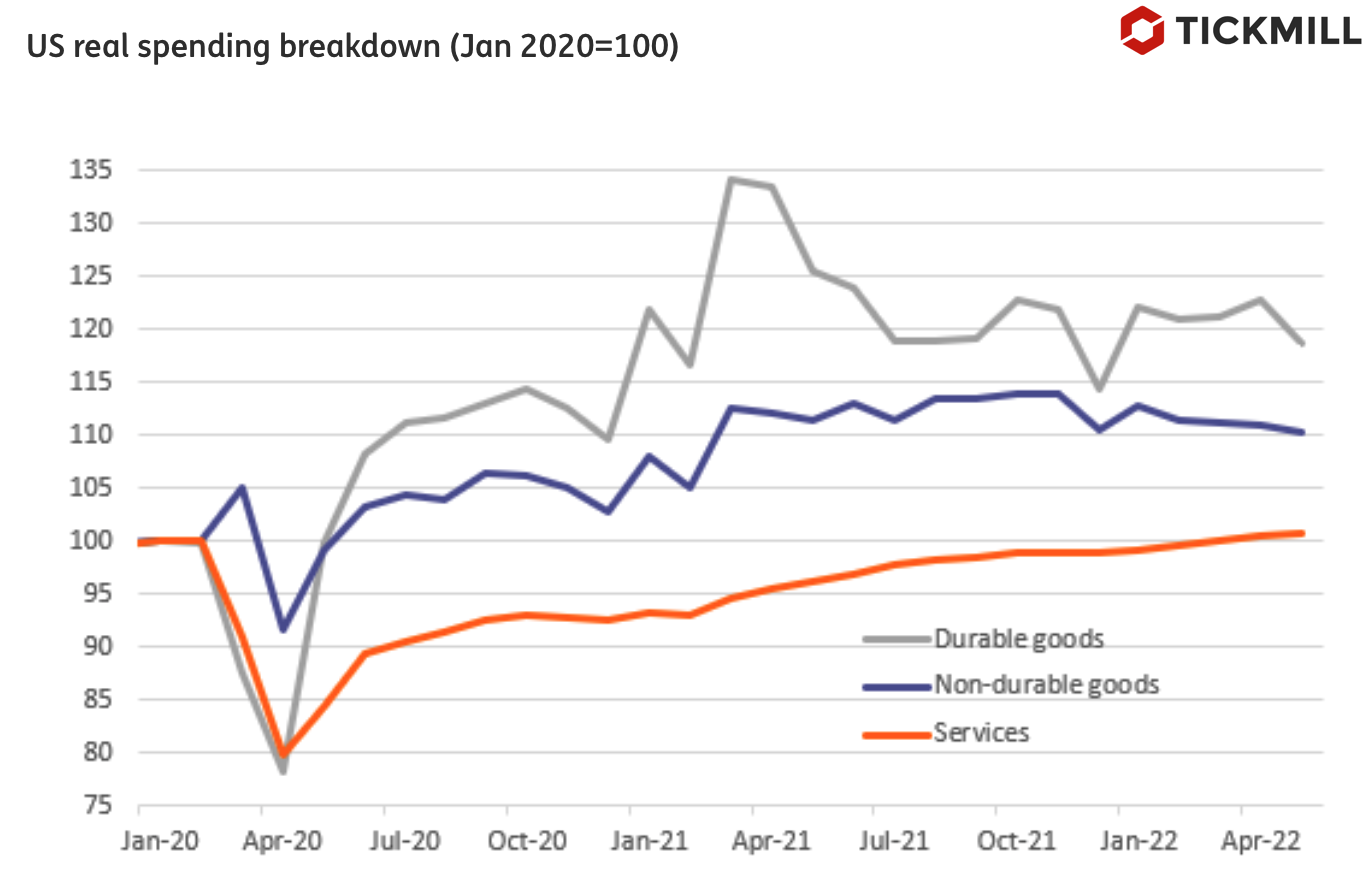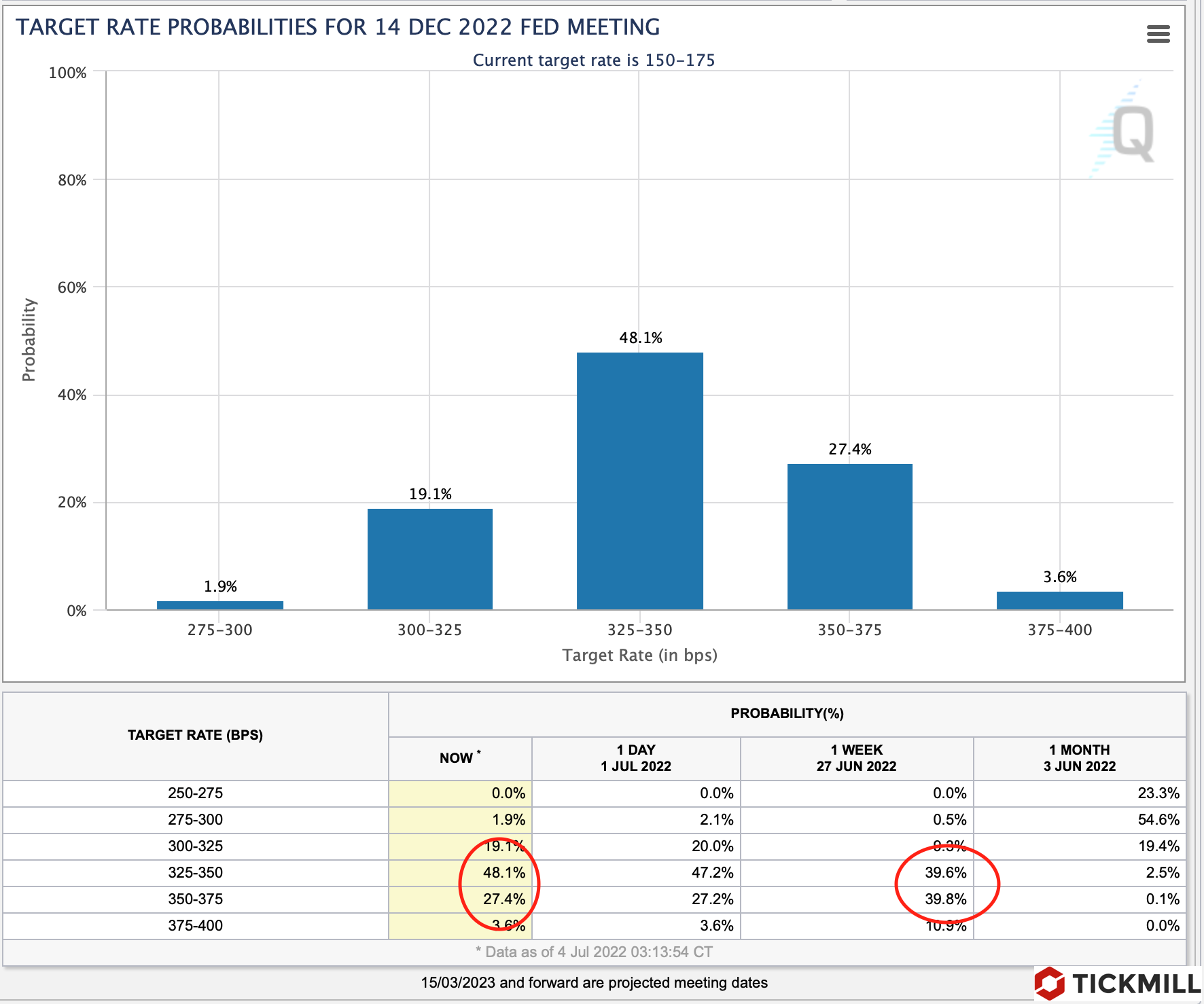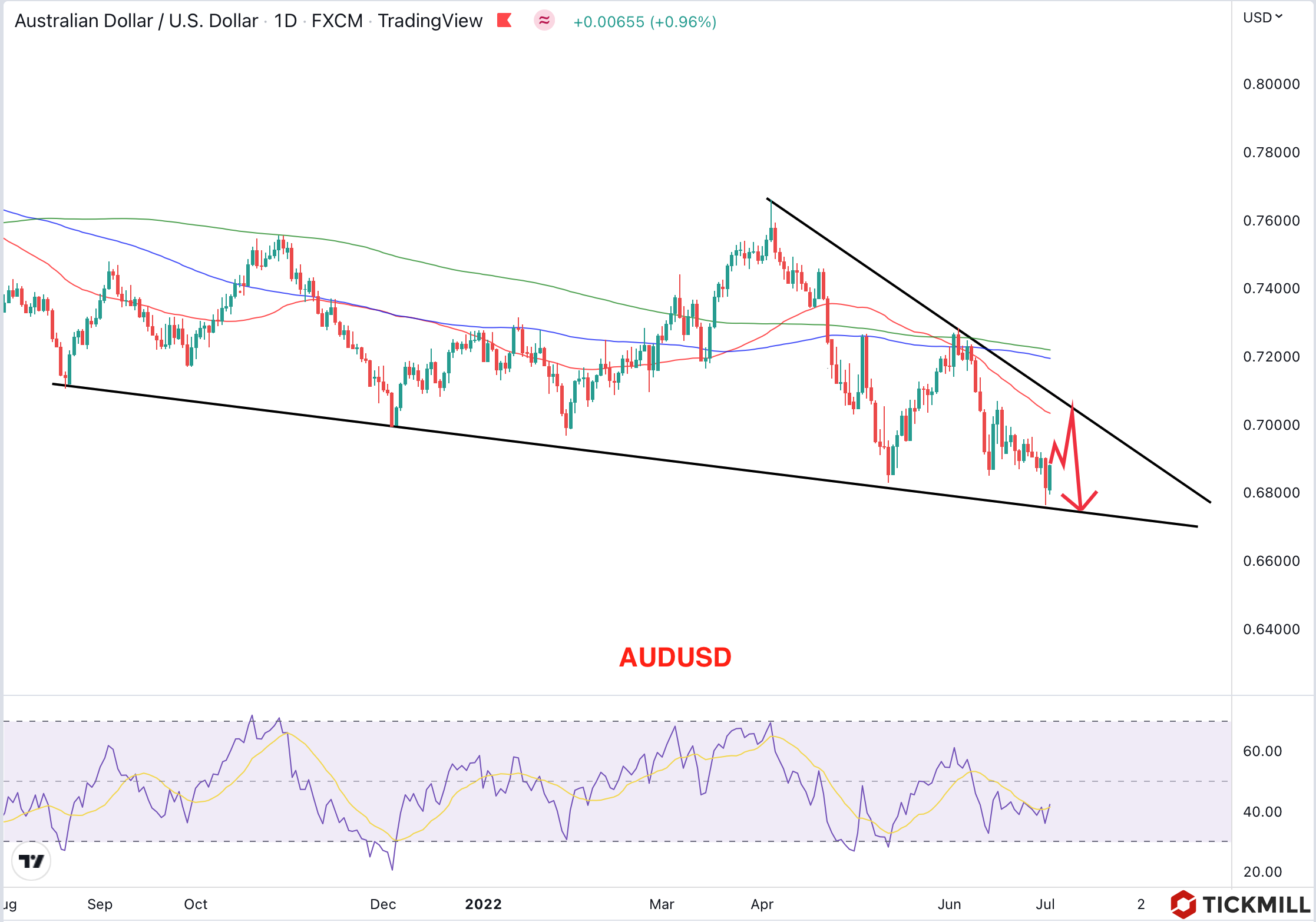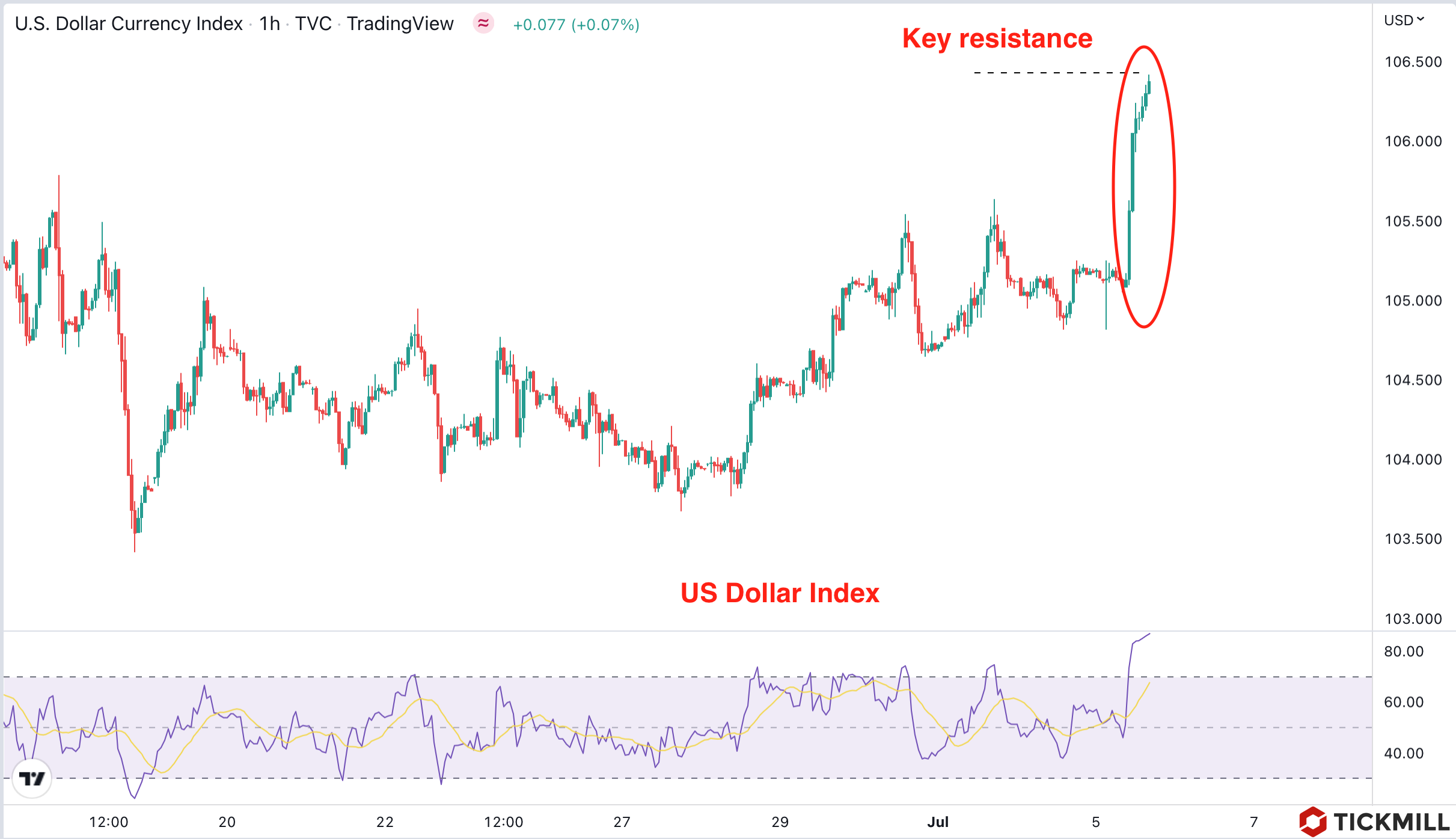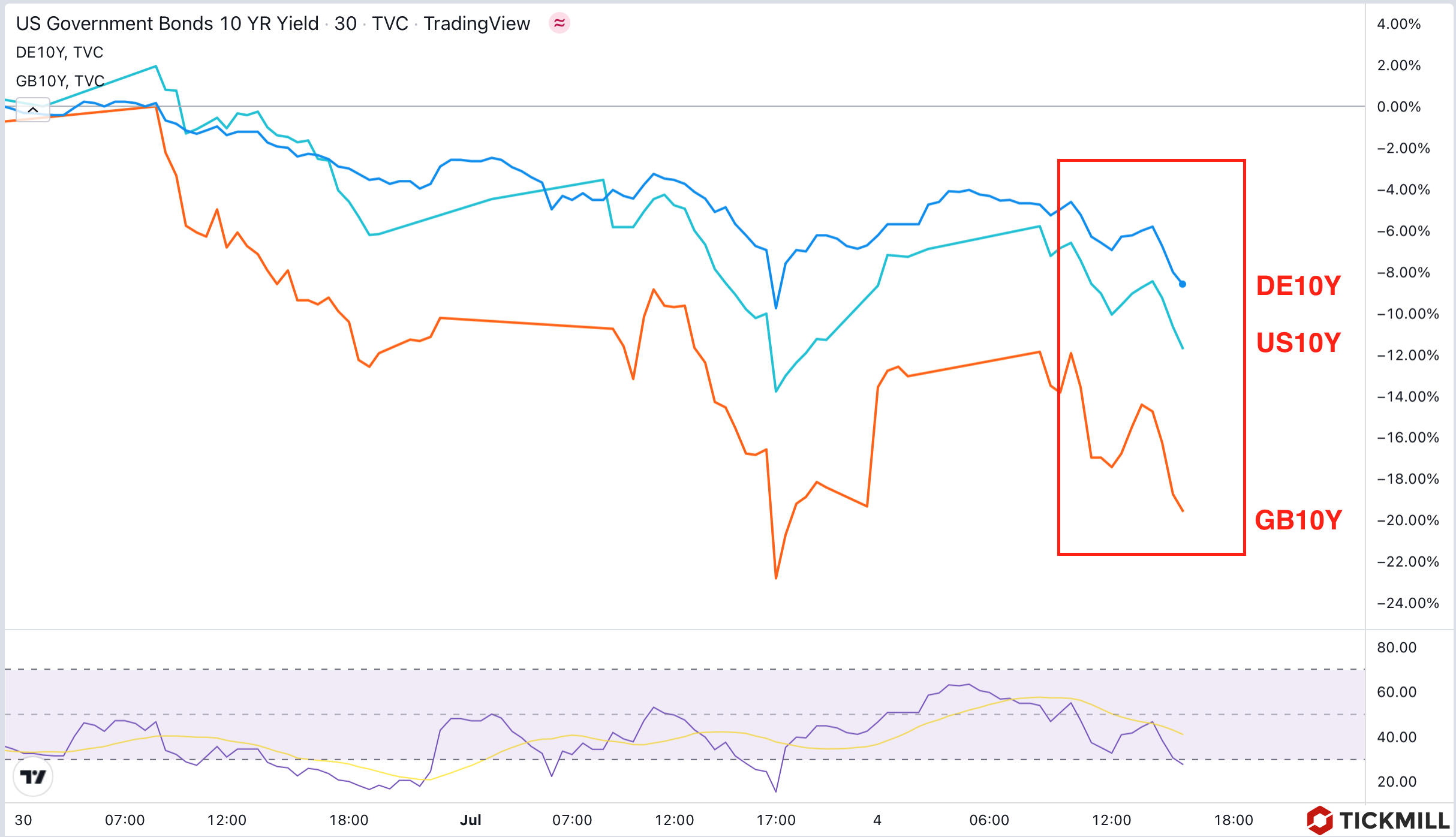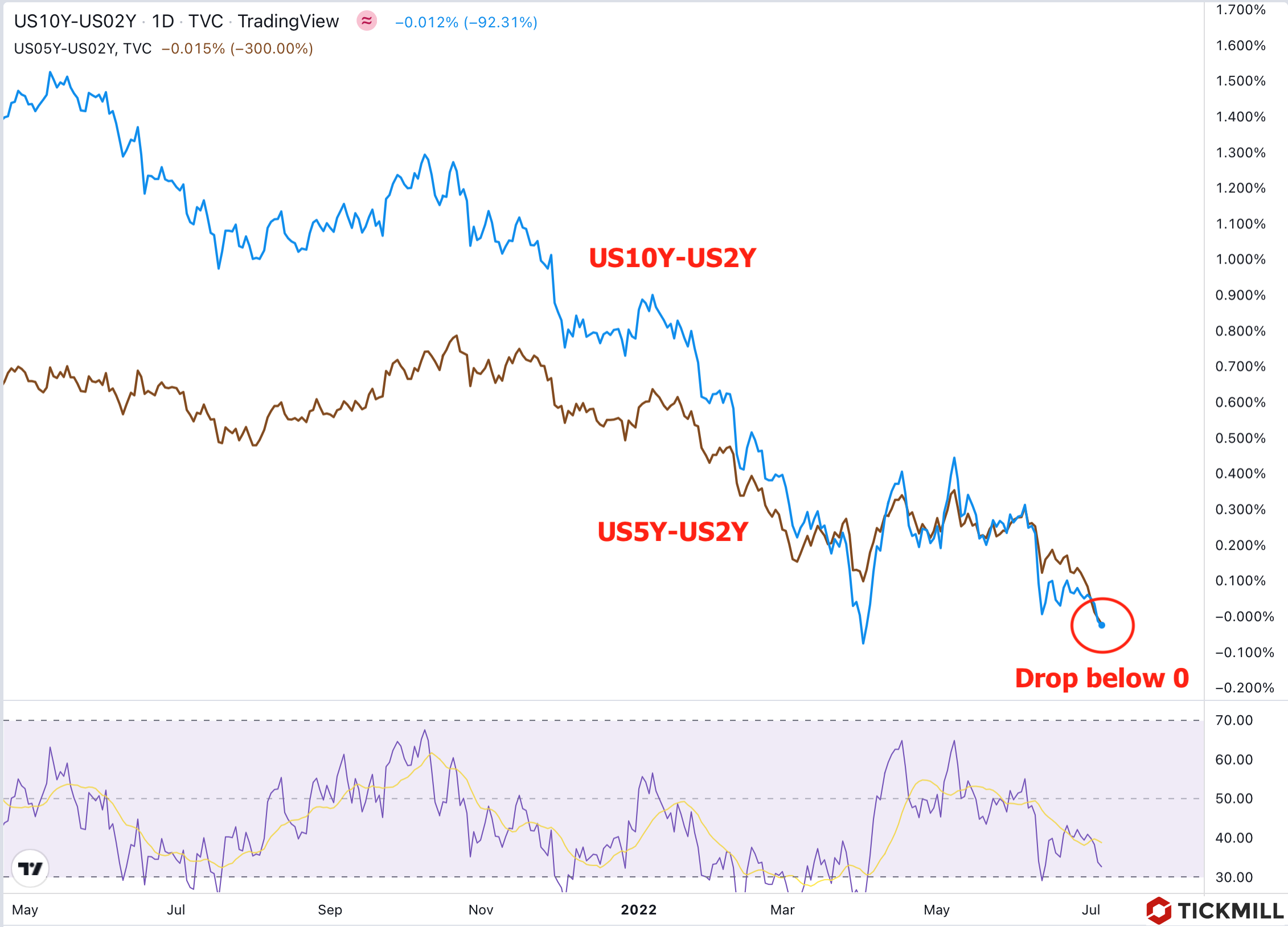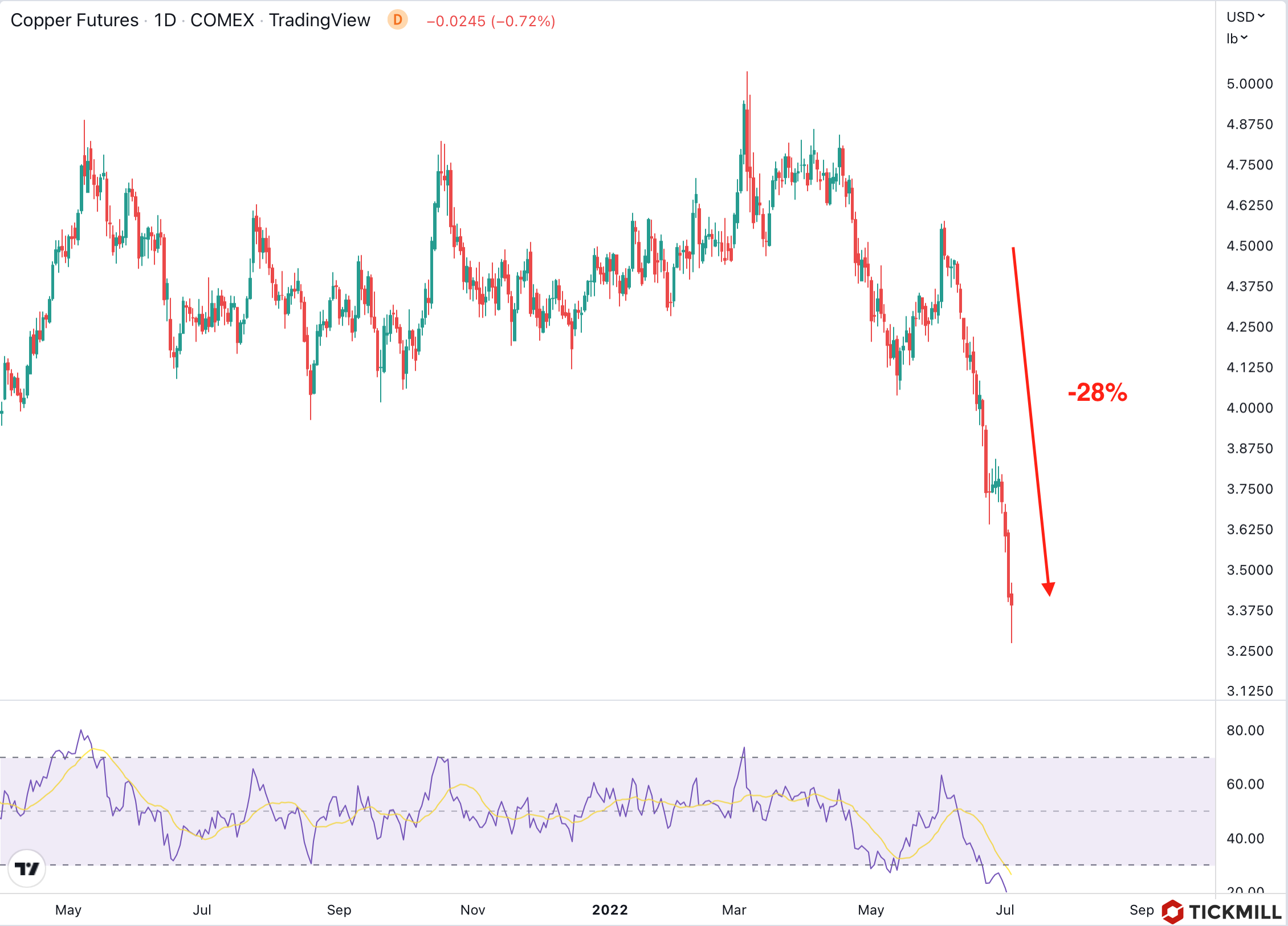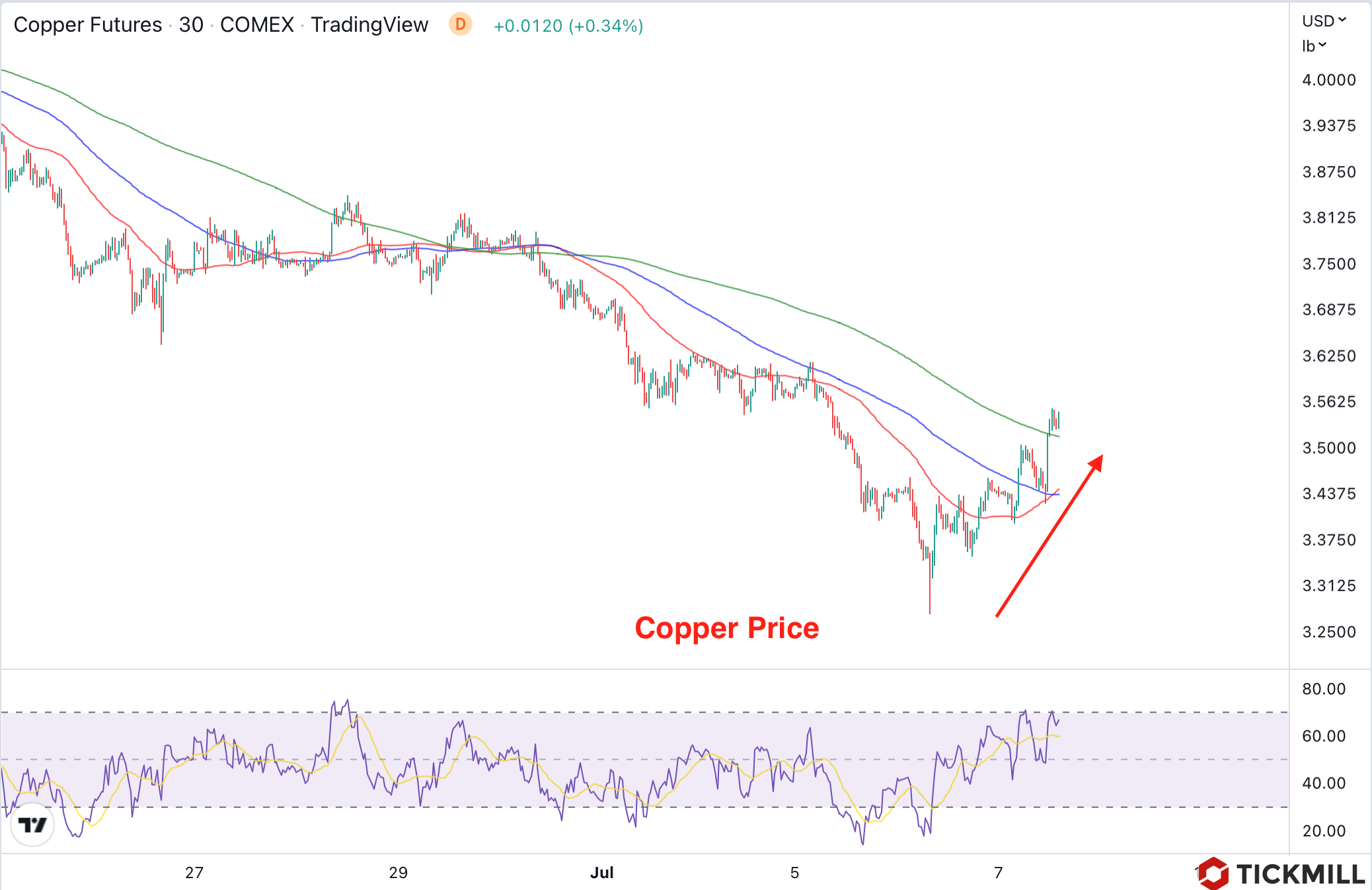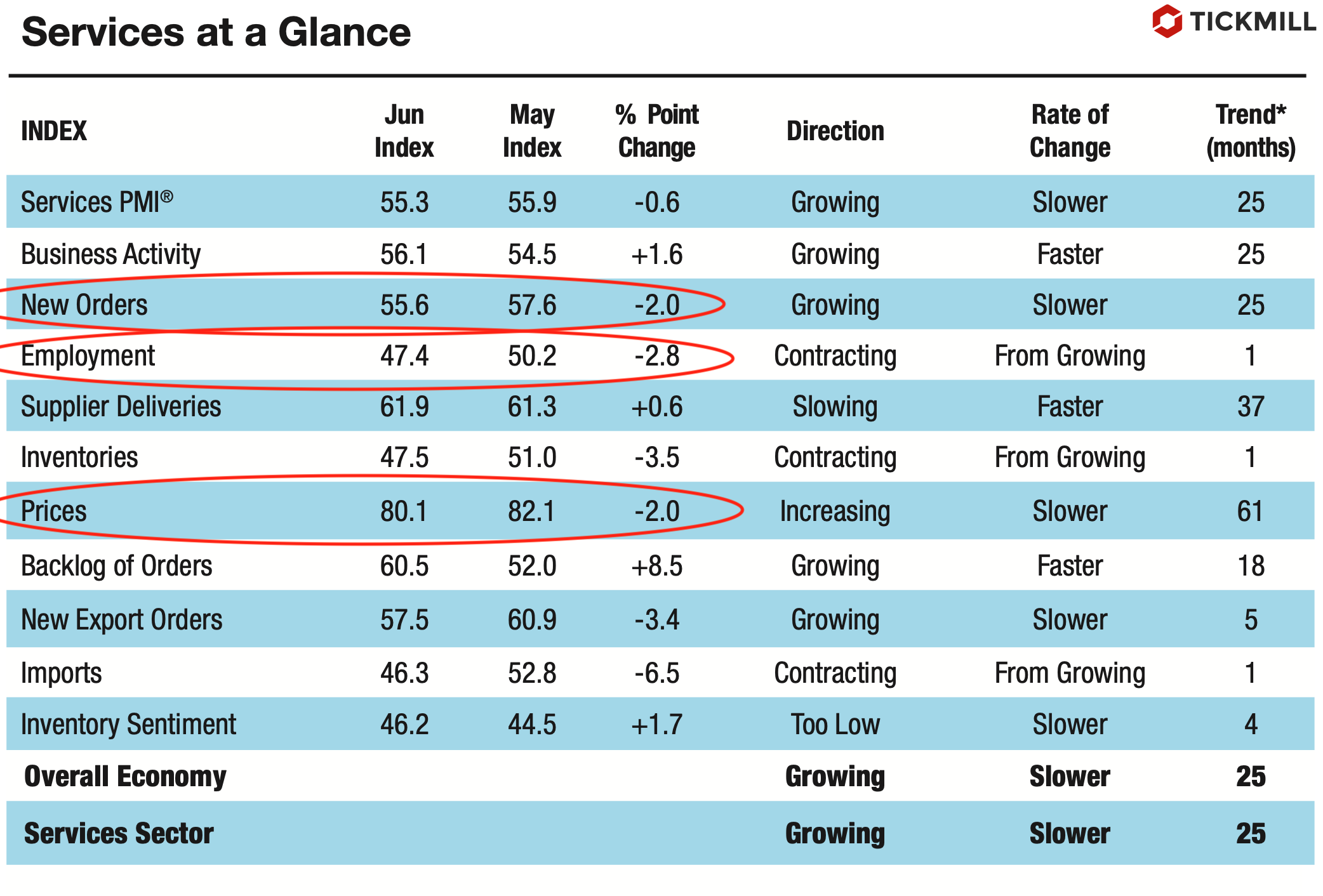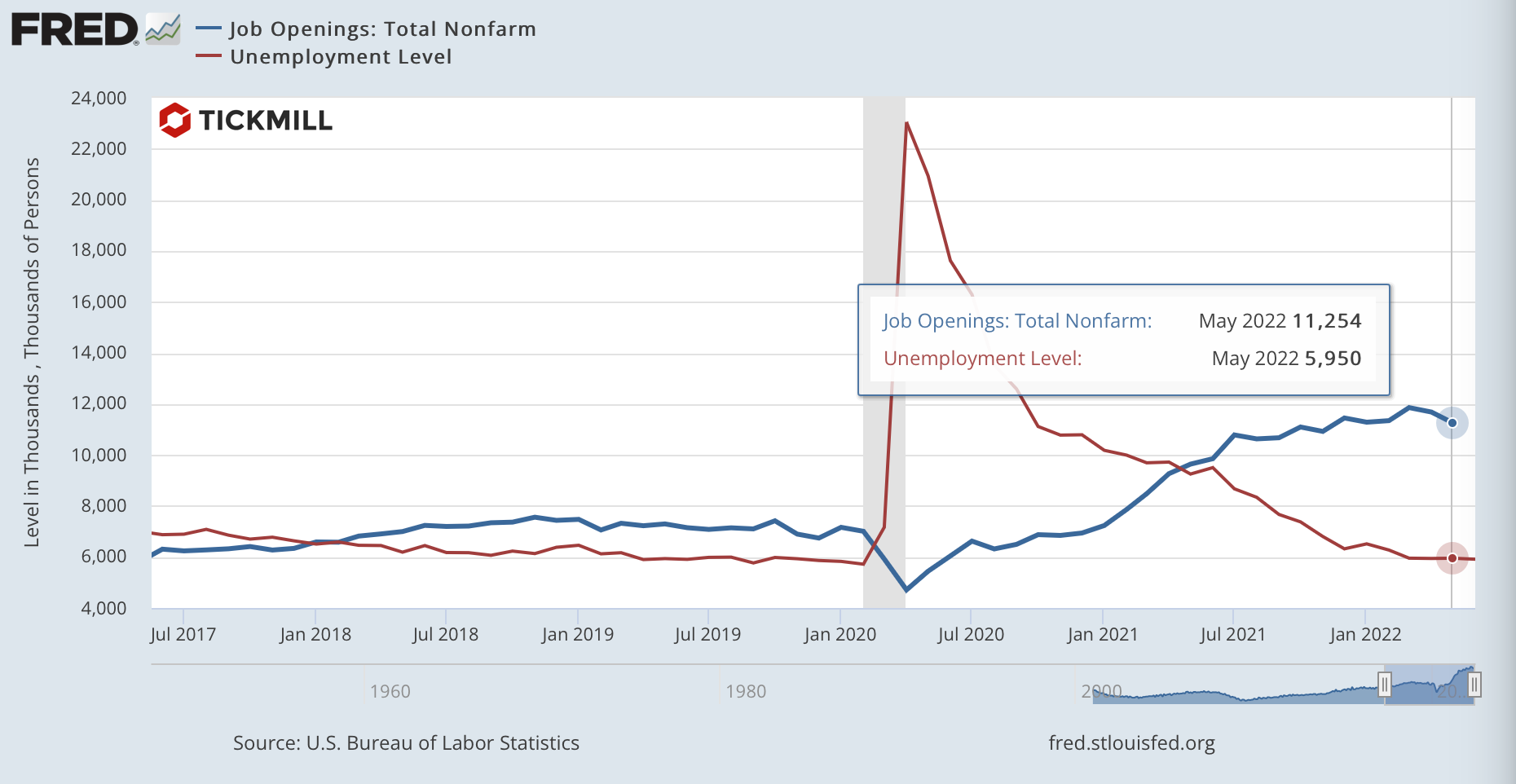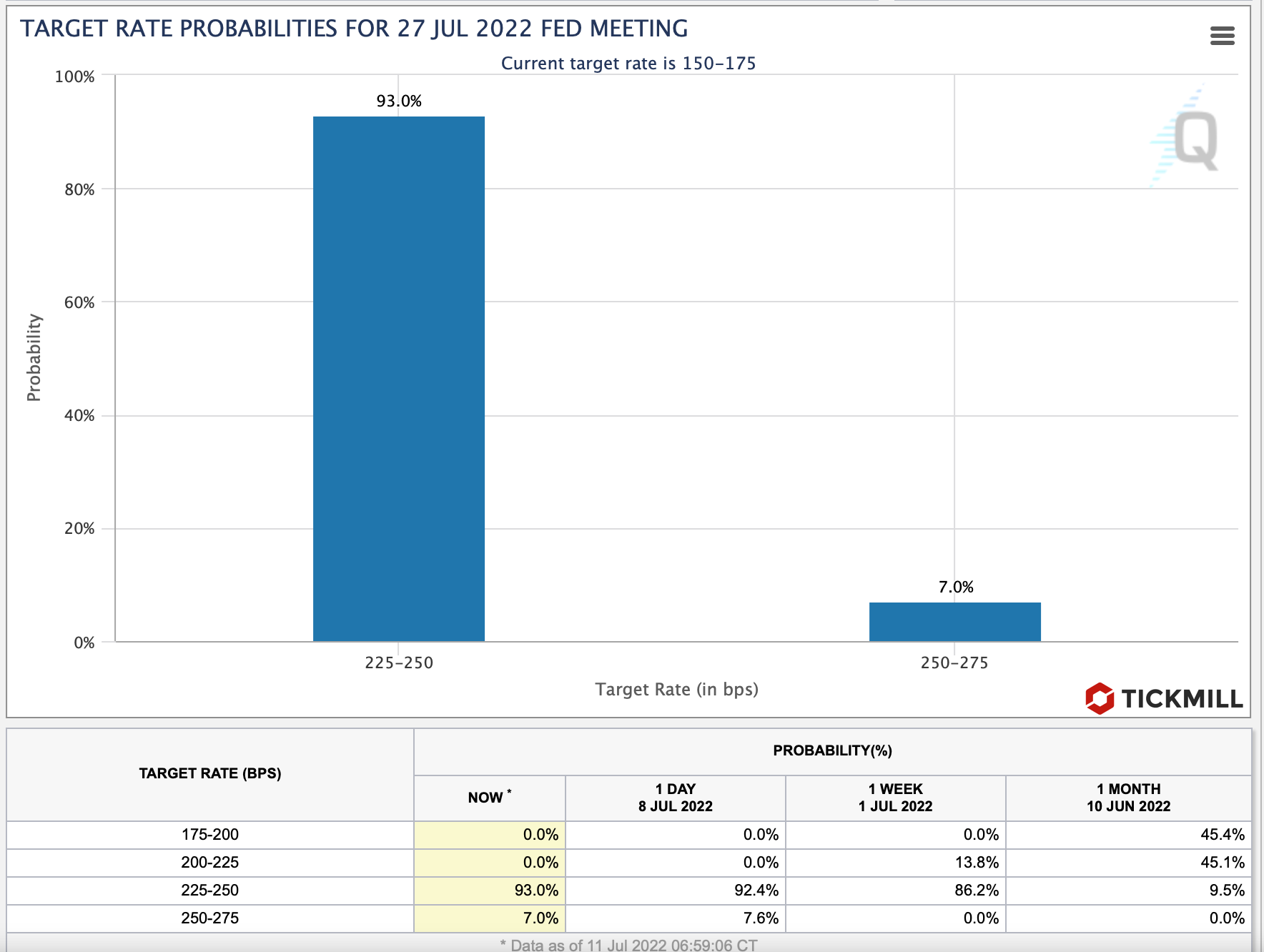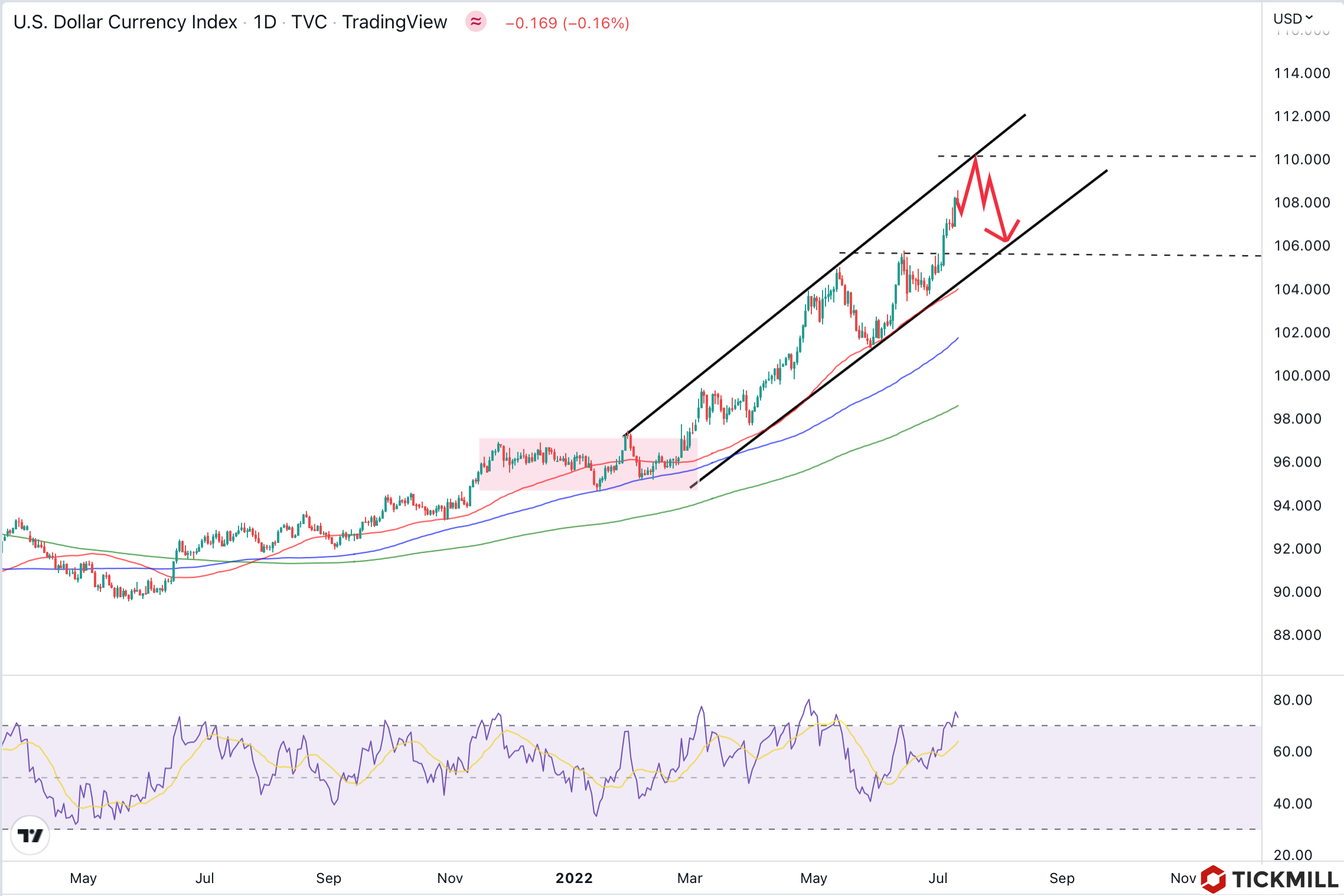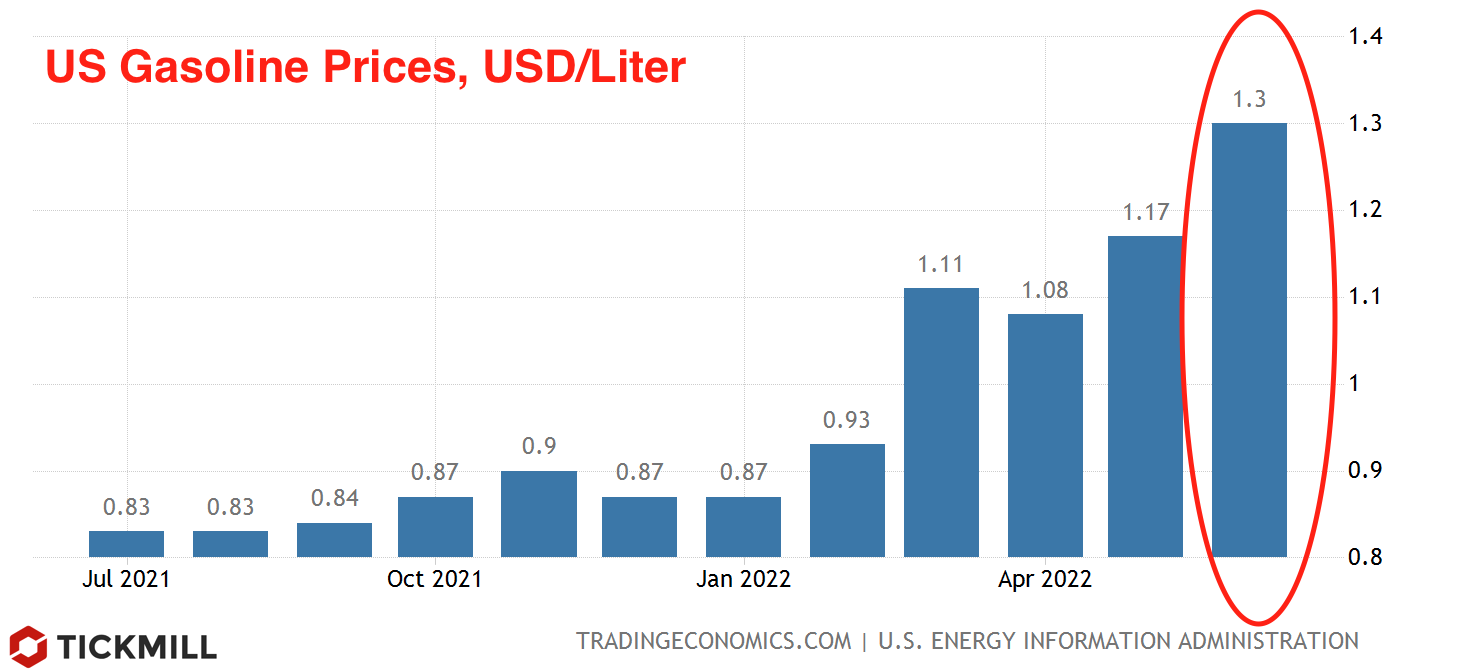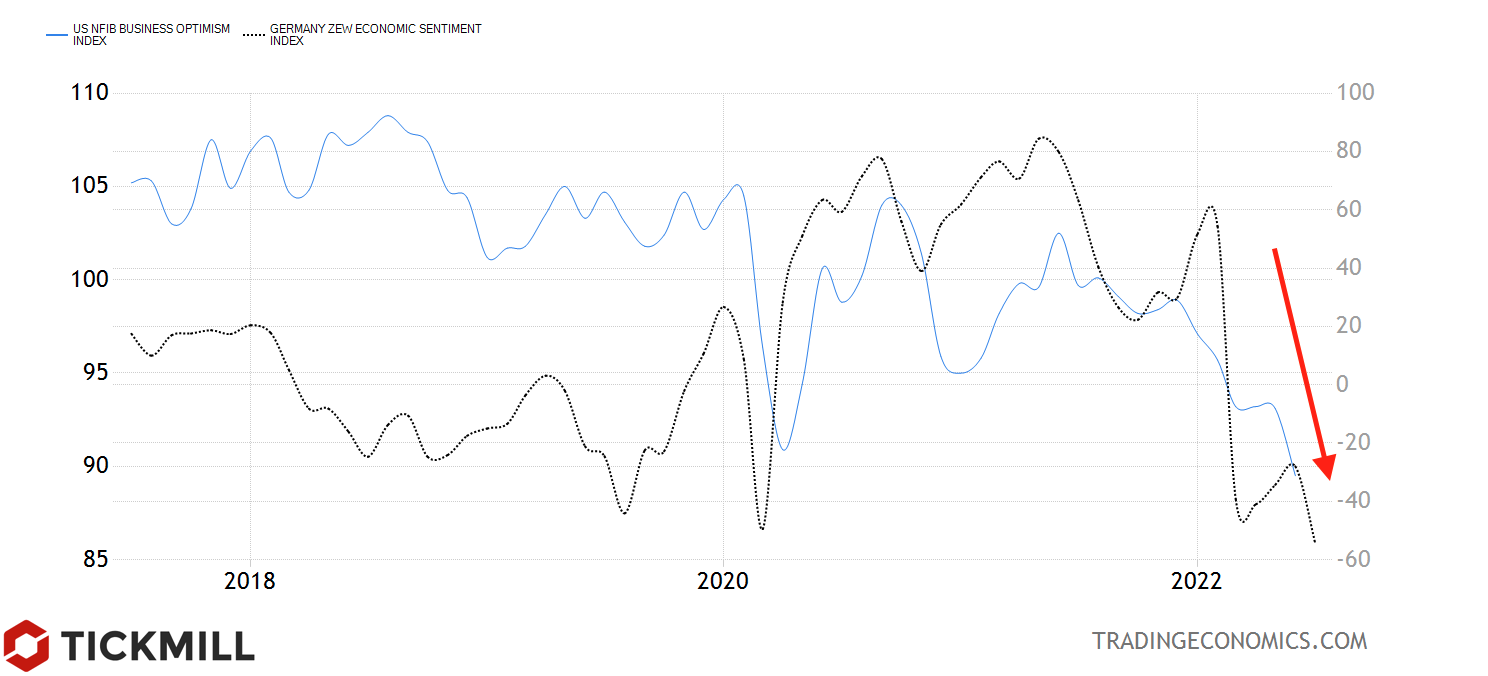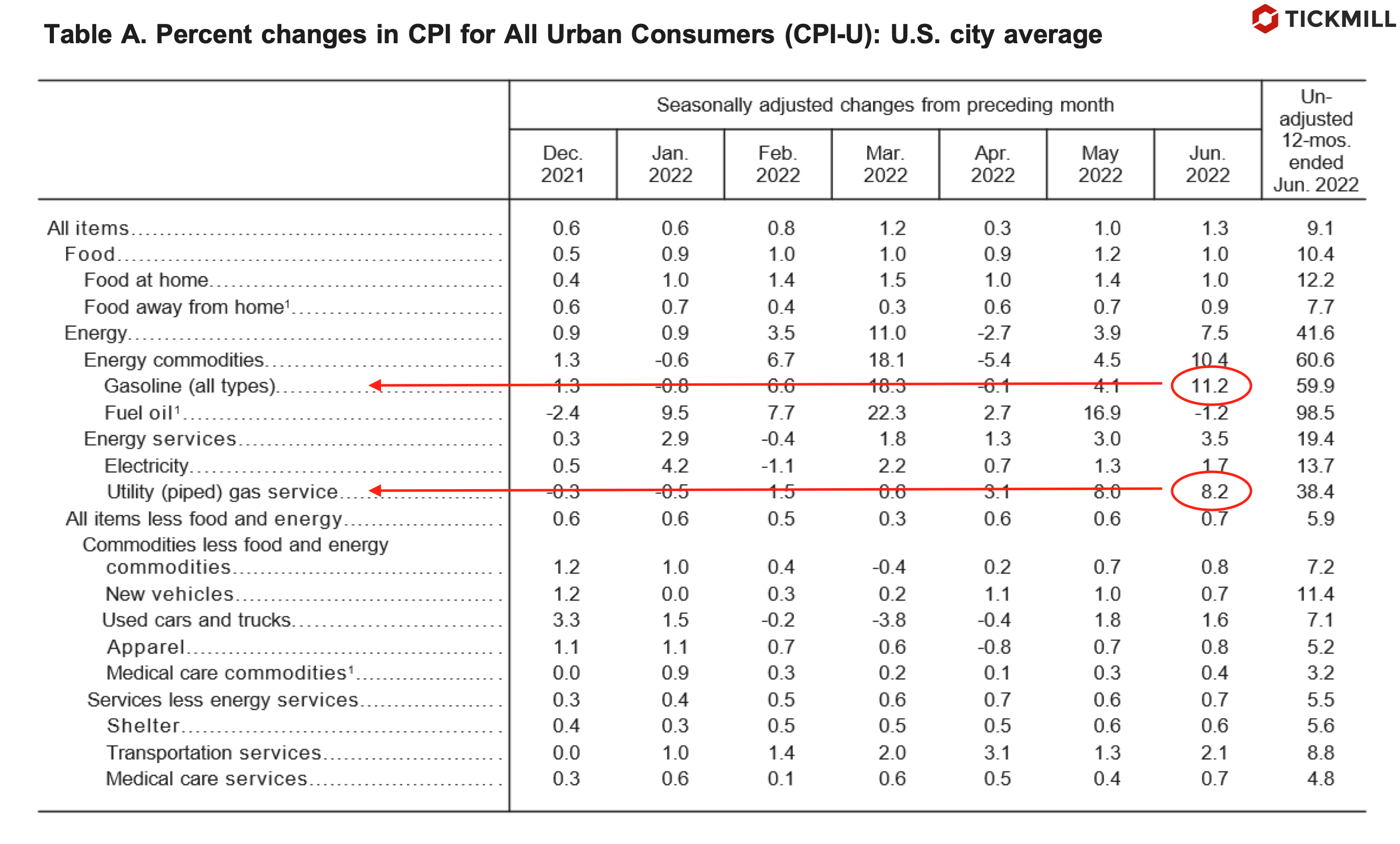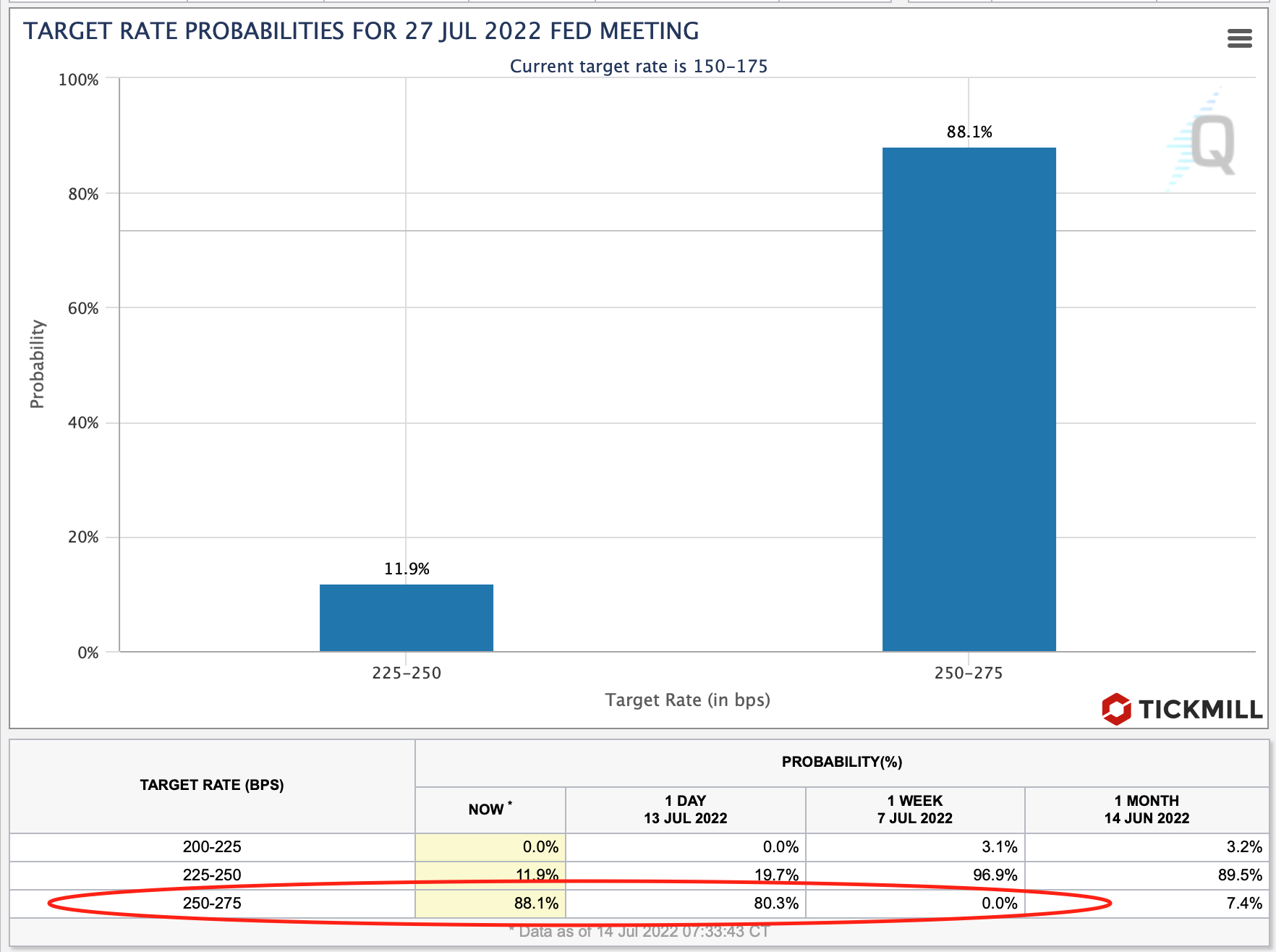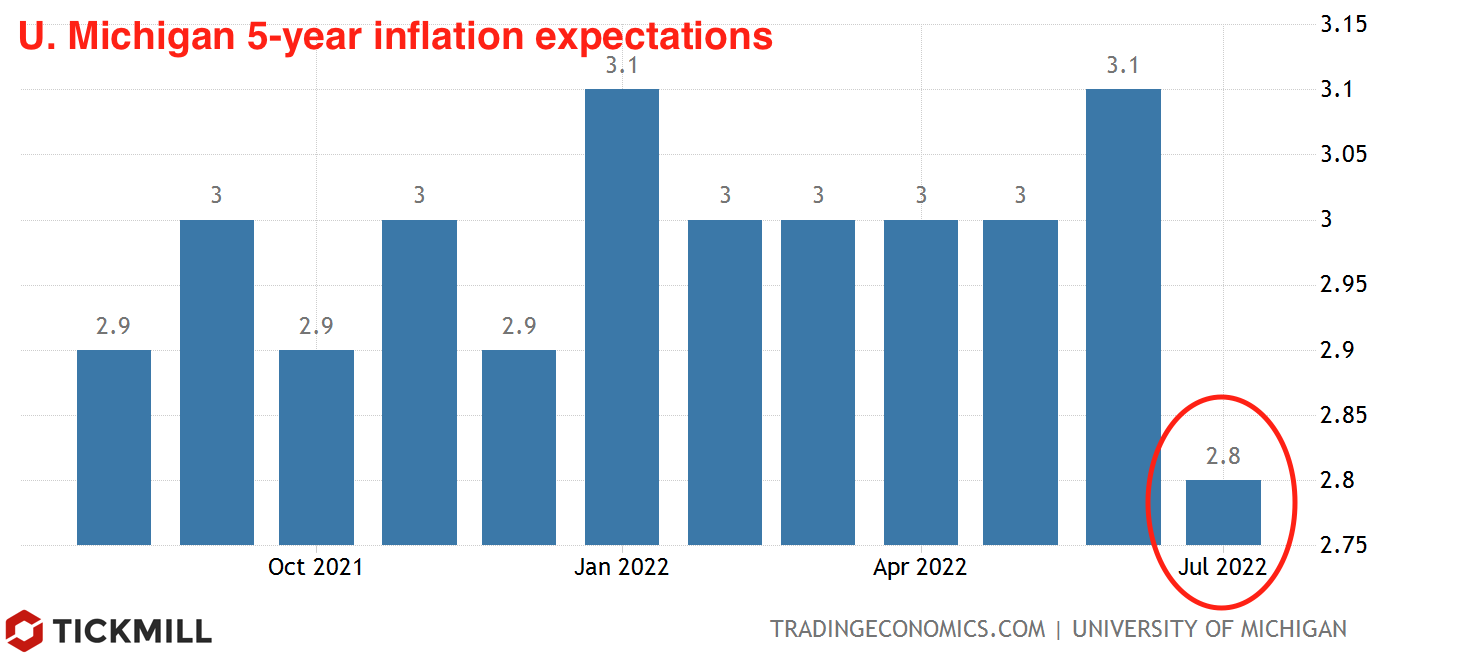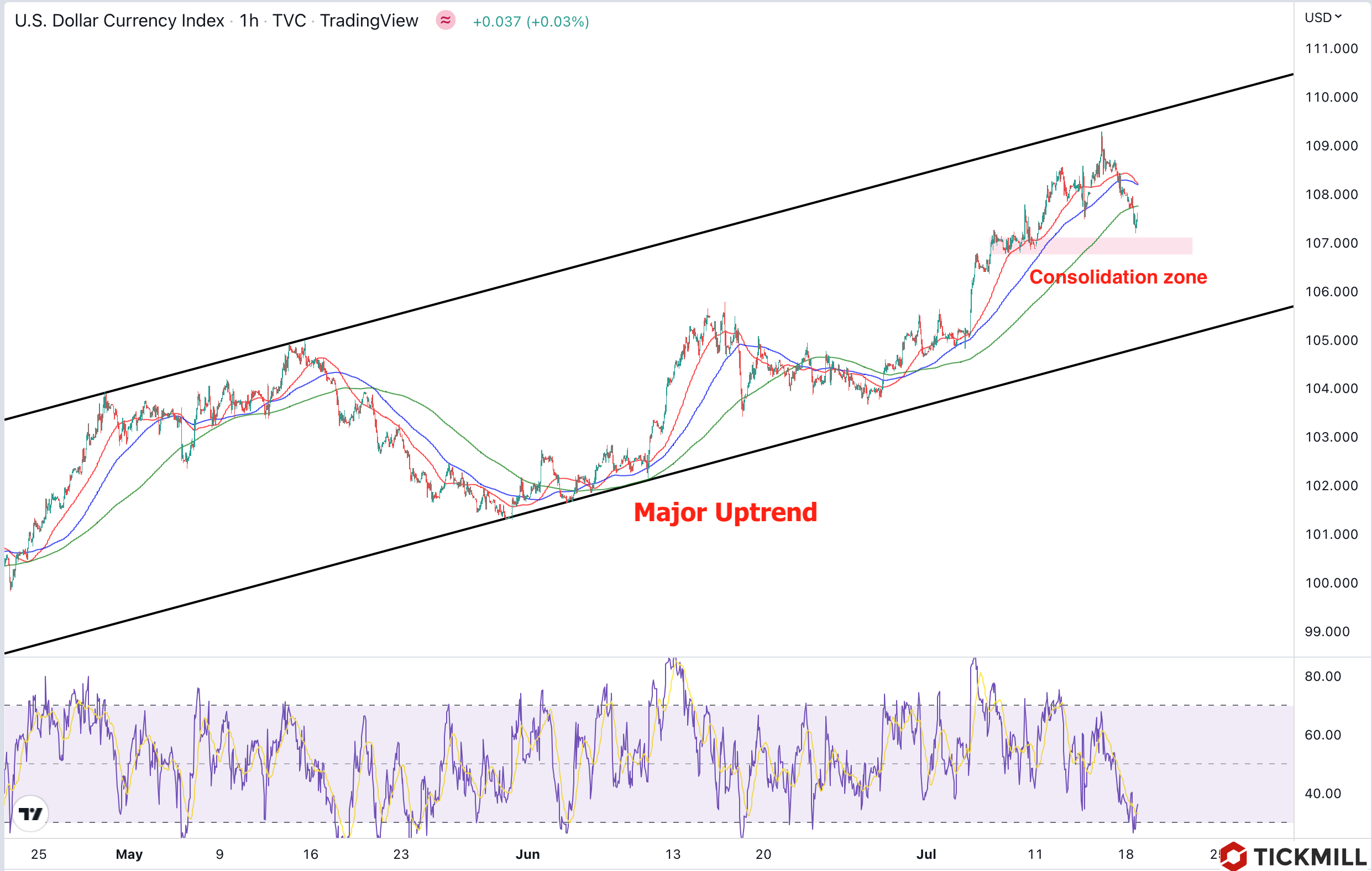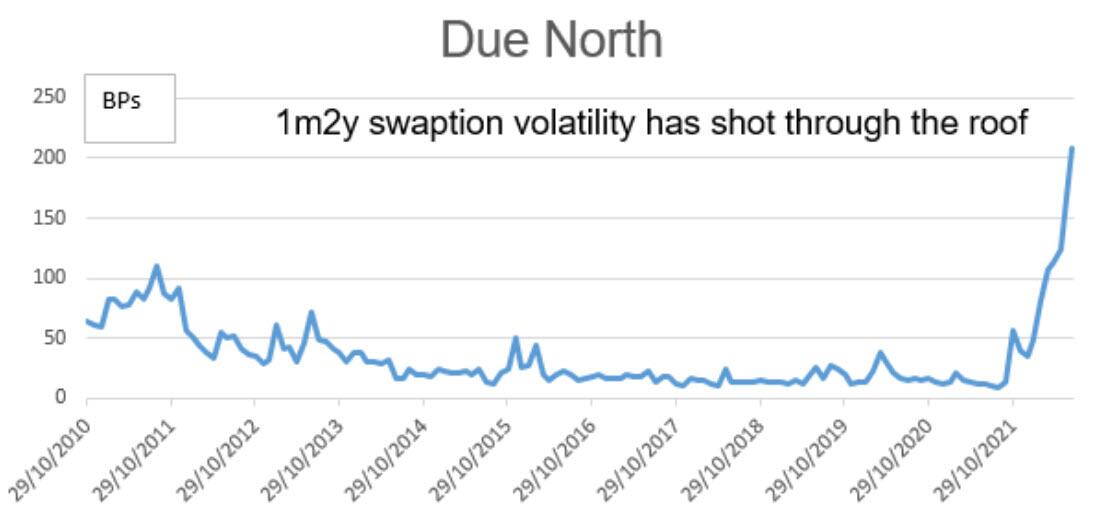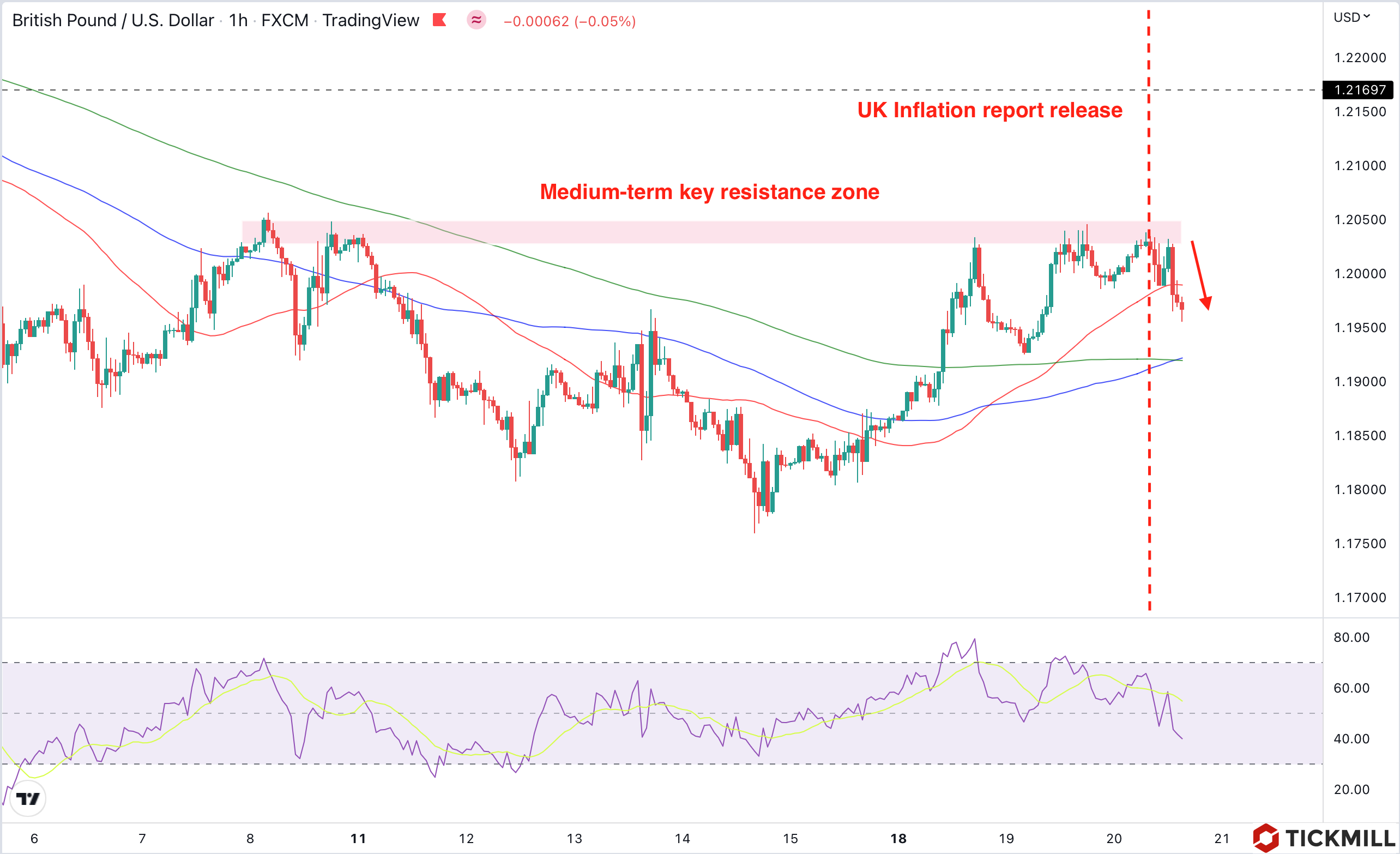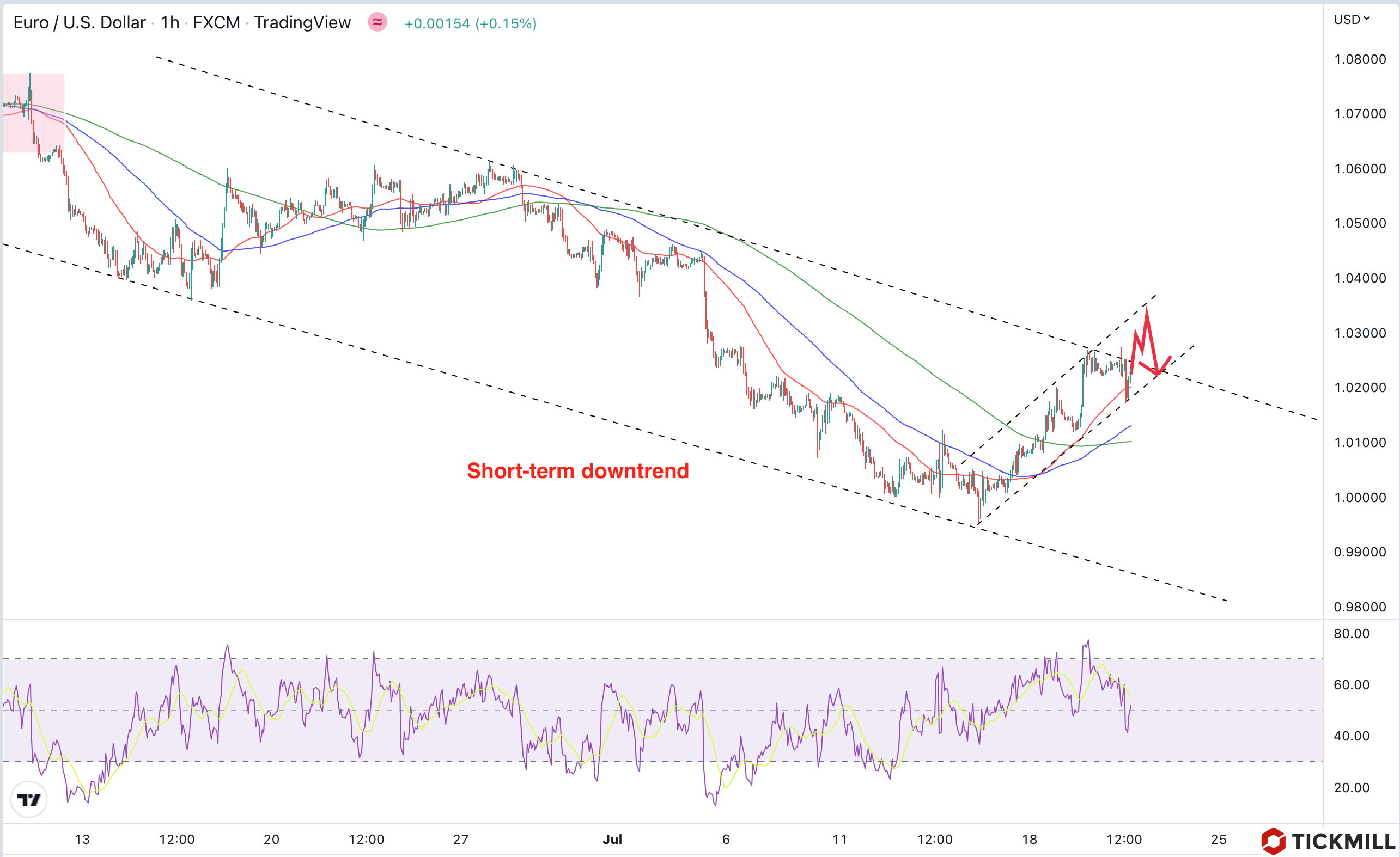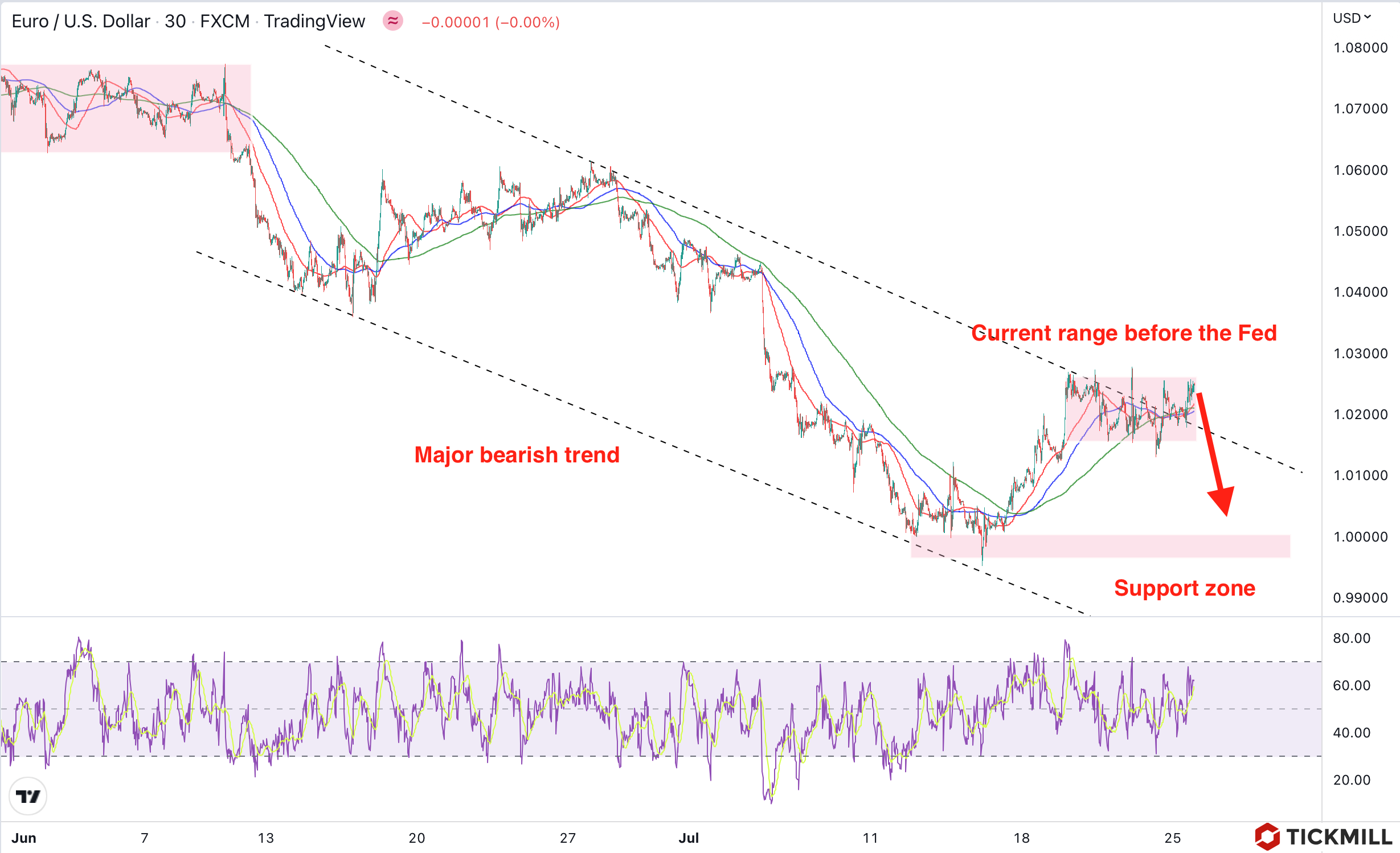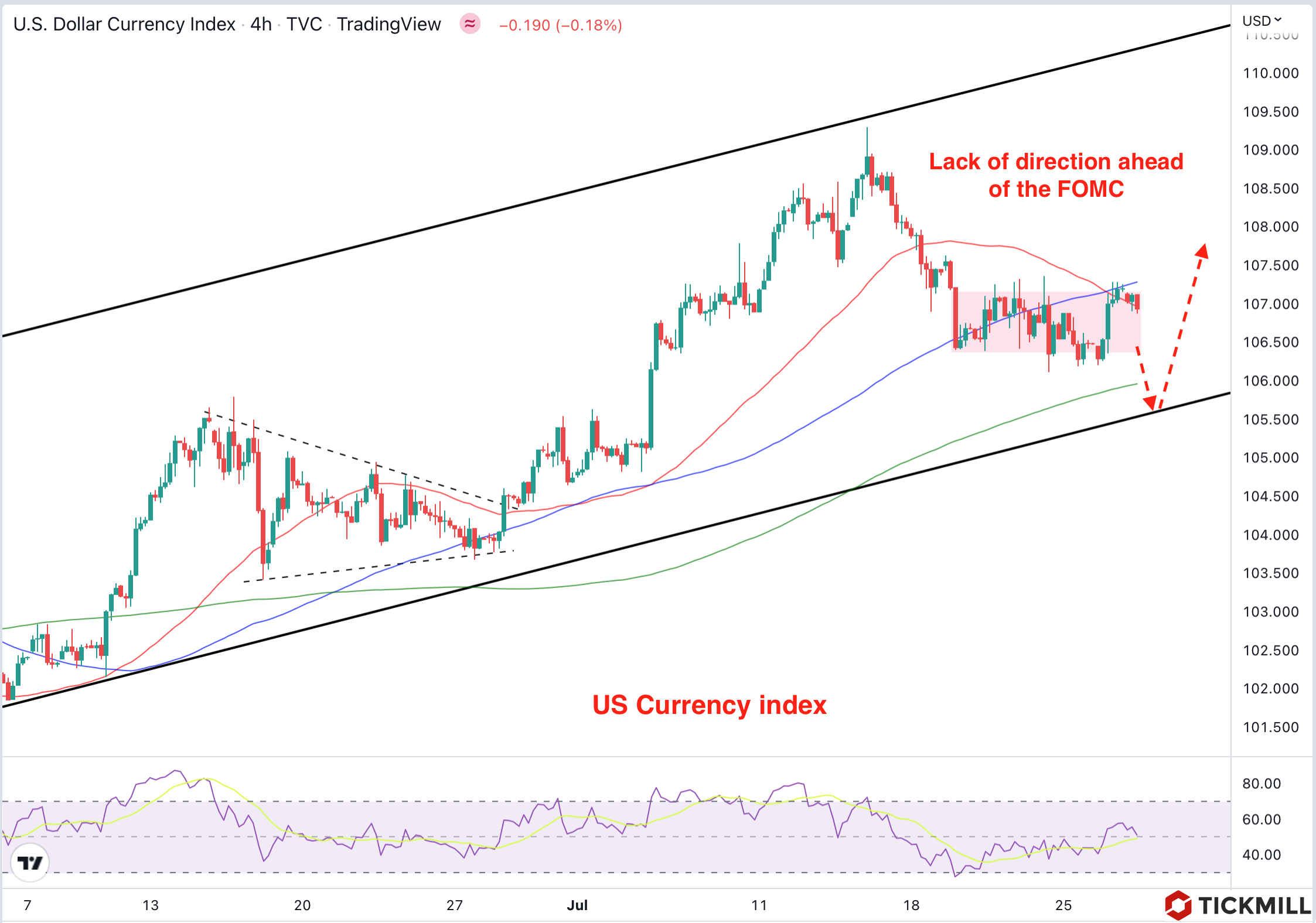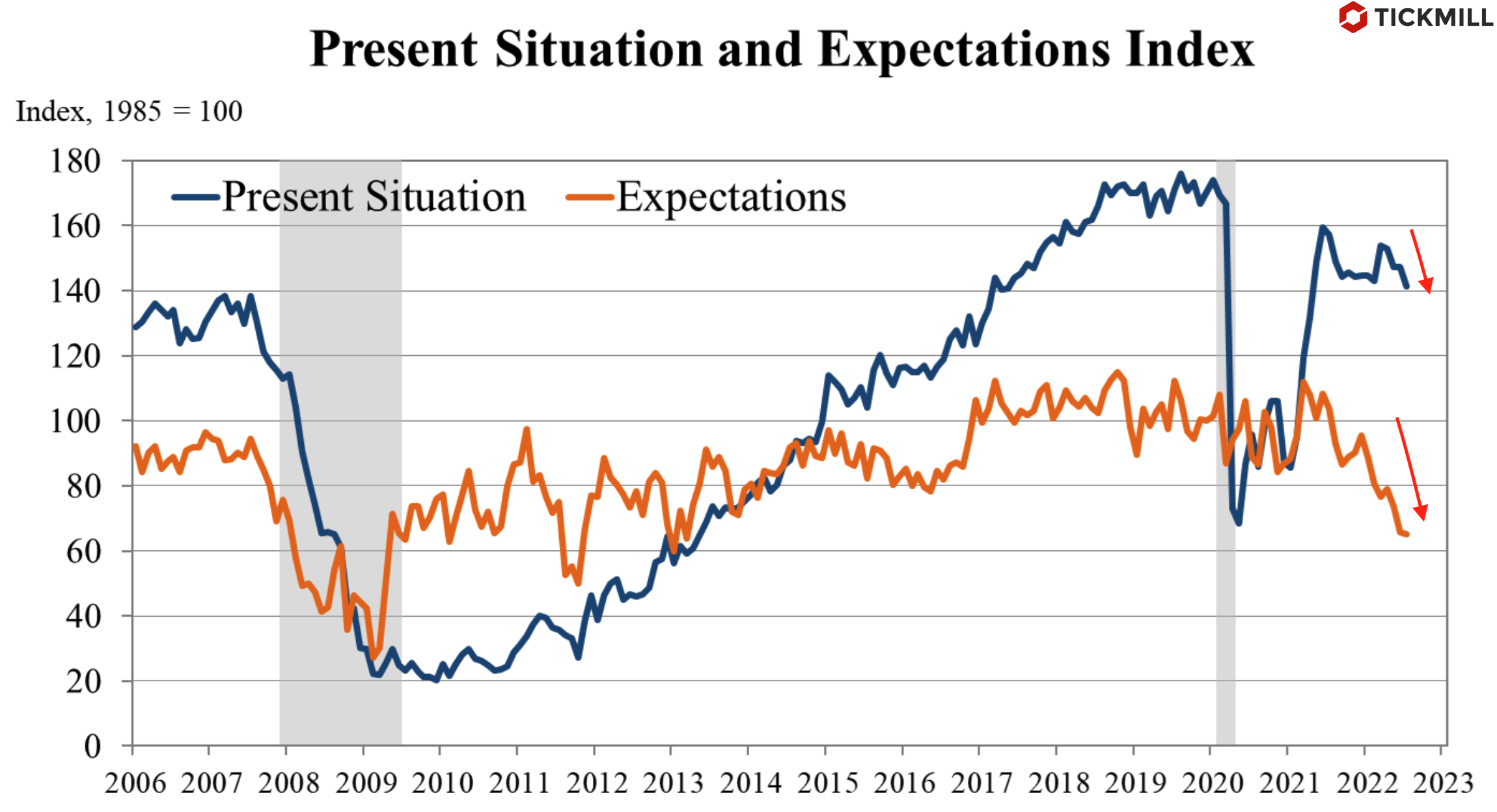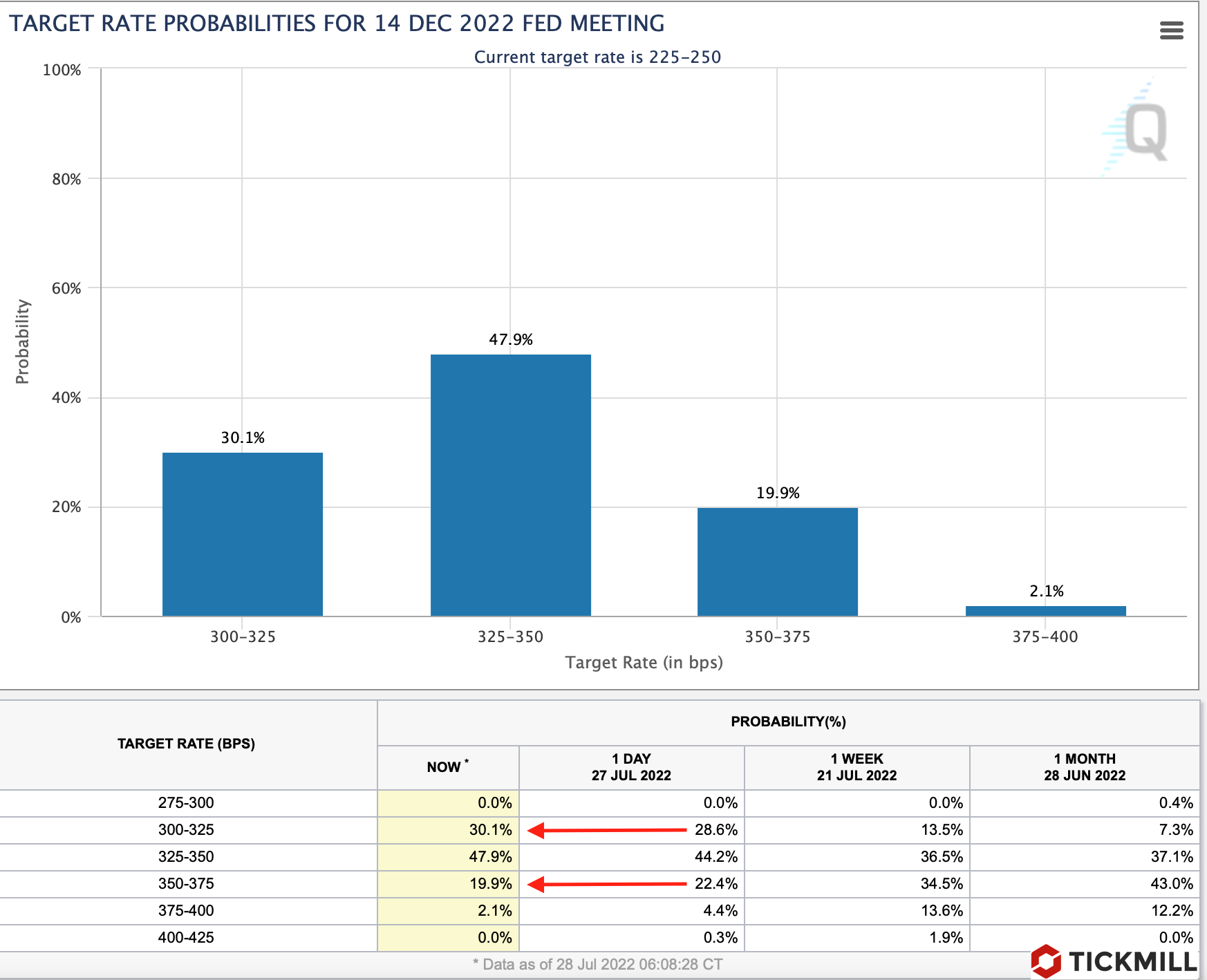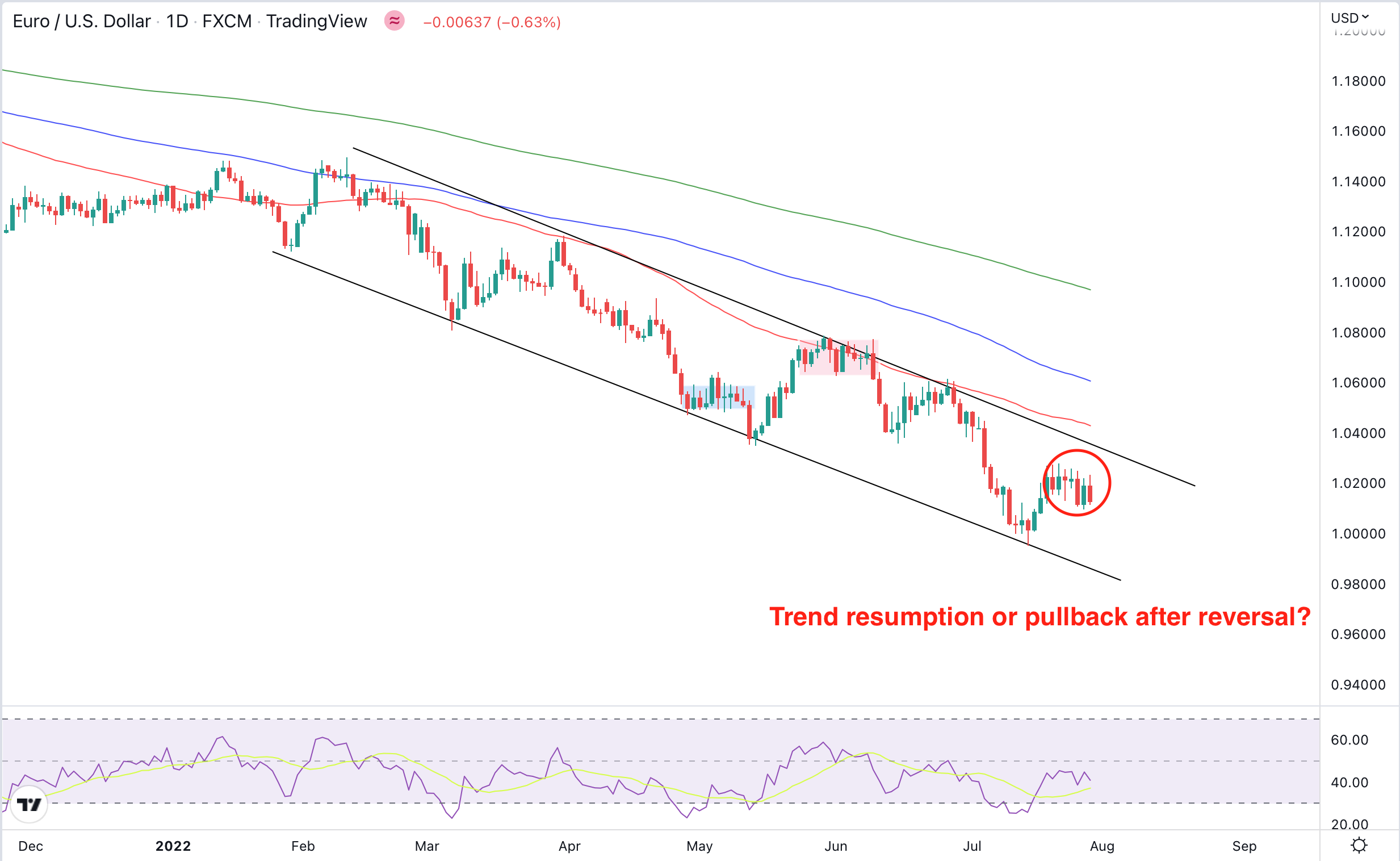tickmill-news
Well-known member
- Messages
- 393
- Likes
- 1
S&P 500 is again the red and more downside seems likely
Risk assets traded in the red on Wednesday, with the dollar rebounding from its recent short-term downtrend as debates about impending recession successfully enters the mainstream. Several large investment banks have already estimated the chances of a recession starting from the 4th quarter of 2022 at more than 50%, which, against the backdrop of the central banks’ “no-tolerance” inflation policy, becomes an even more depressing forecast. Governments and central banks have practically no tools left to smooth out the recession: one way or another, their effect is reduced to creating positive demand shocks, which is unacceptable in conditions of high inflation and negative supply shocks.
The dollar index is again approaching multi-year highs as bearish factors are at play in both two key asset classes – stocks and bonds. Slightly negative dynamics is also observed in the sovereign segment of the debt market - bonds with 10-year maturity in the US and Germany offer a slightly lower yield than yesterday.
Of the latest economic updates, we can highlight the data on inflation in the UK. Headline monthly inflation was 0.7%, better than expected, consensus again underestimated producer price inflation, annual PPI of input prices reached 22.1% (forecast 19.4%), monthly PPI - 2.1%. UK inflation figures are the highest in 40 years:
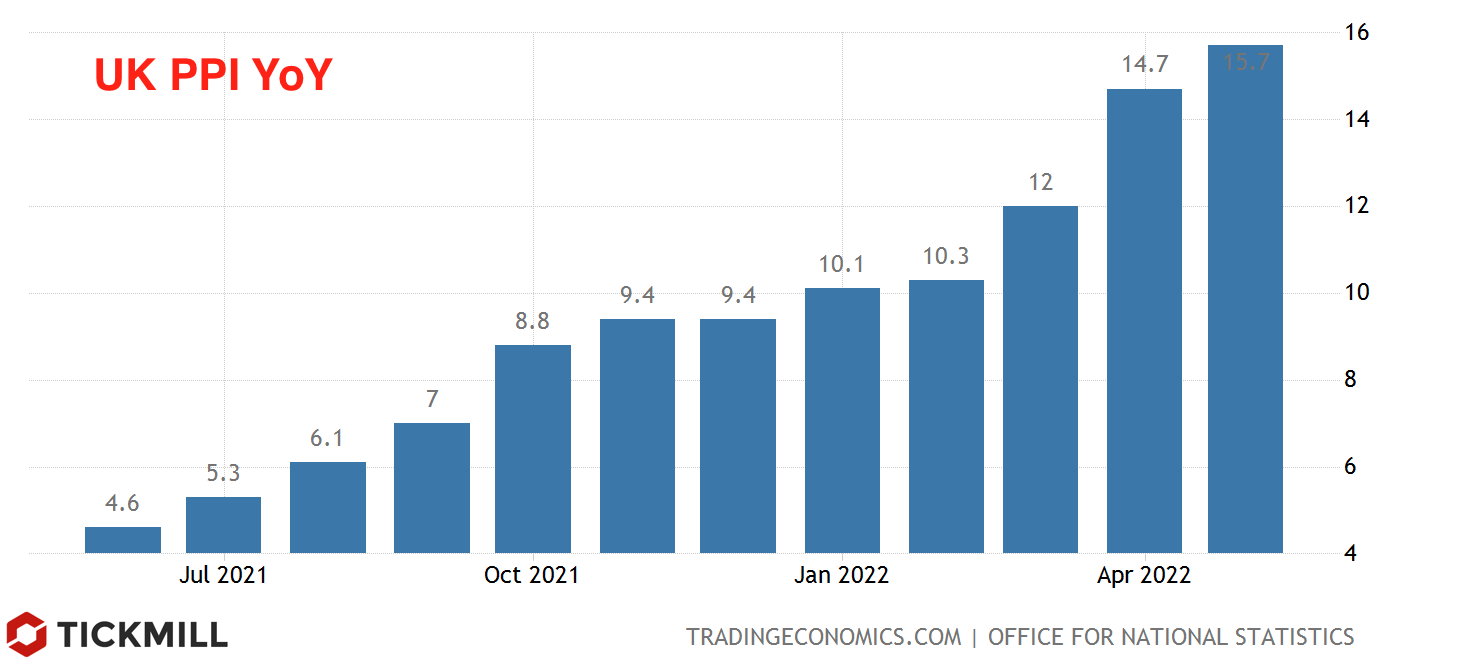
Investors have not yet received a clear explanation from the British Central Bank what it will do with high inflation, at the last meeting there was a modest increase in rate by 25 basis points, there wasn’t any clue in the policy statement that the Central Bank will throw all its efforts into fighting inflation (as stated Fed), that’s why the inflation report made a negative impression on the pound, which today is more actively losing ground against the dollar compared to the European currency. GBPUSD is testing from above 1.22, mainly bearish sentiment for the pair will remain until the price remains below the resistance zone of 1.2320 -1.2380:
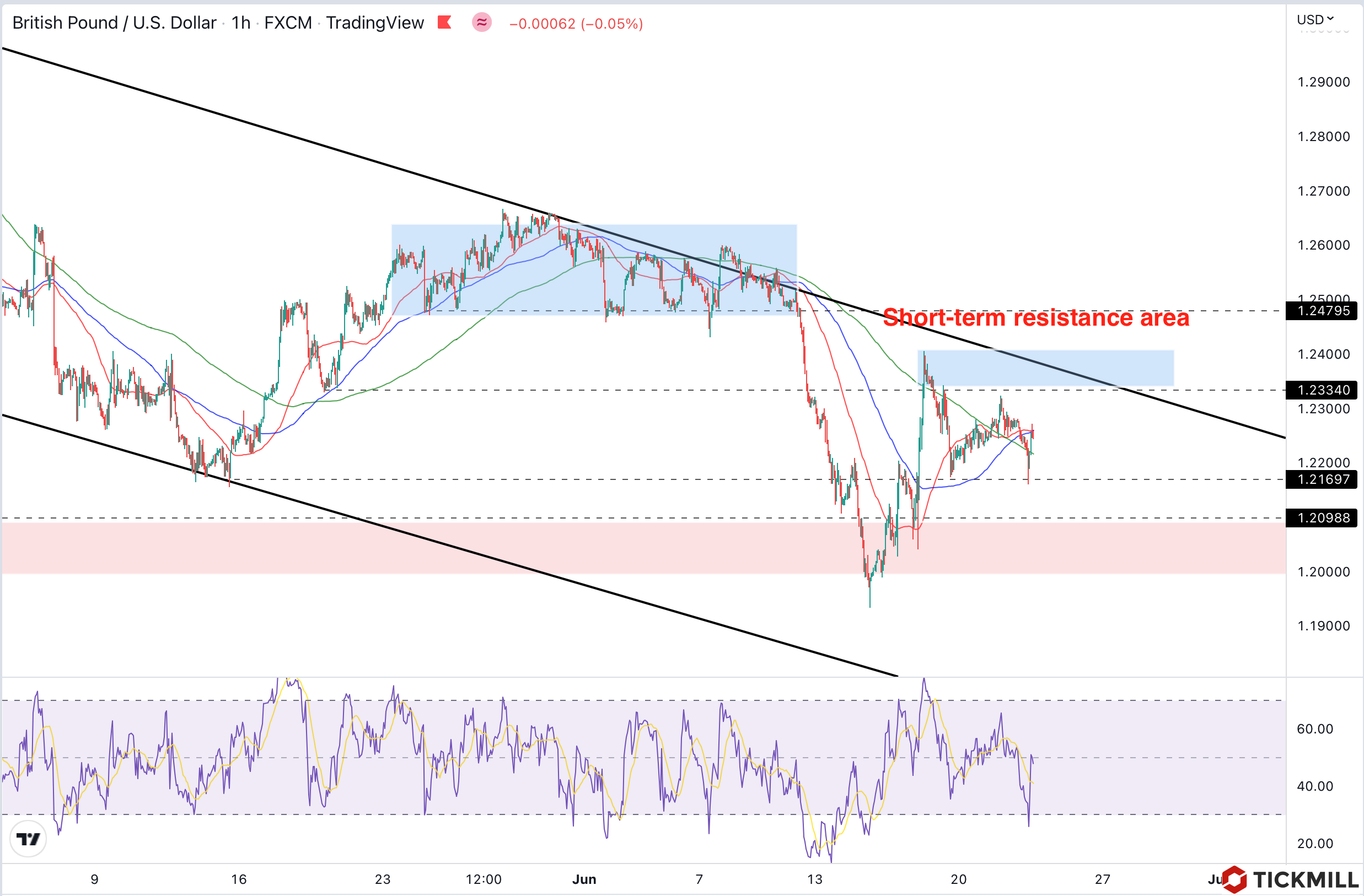
The oil market is showing a long-awaited positive momentum, with prices moving towards the $100 per barrel level, as fears of a subsidence in demand due to the threat of a recession seem to be beginning to outweigh the signals of a shortage on the global supply side. Lower prices allow us to expect a weakening of general inflation in the coming months and the markets will probably gradually begin to price in this important signal, however, in order to consolidate this optimism, it is necessary to see a softening stance on the side of central banks, primarily from the Fed.
Classic recession indicators confirm that pessimism is slowly starting to dominate sentiment. The spread between 10-year and 2-year US Treasuries is approaching zero again:
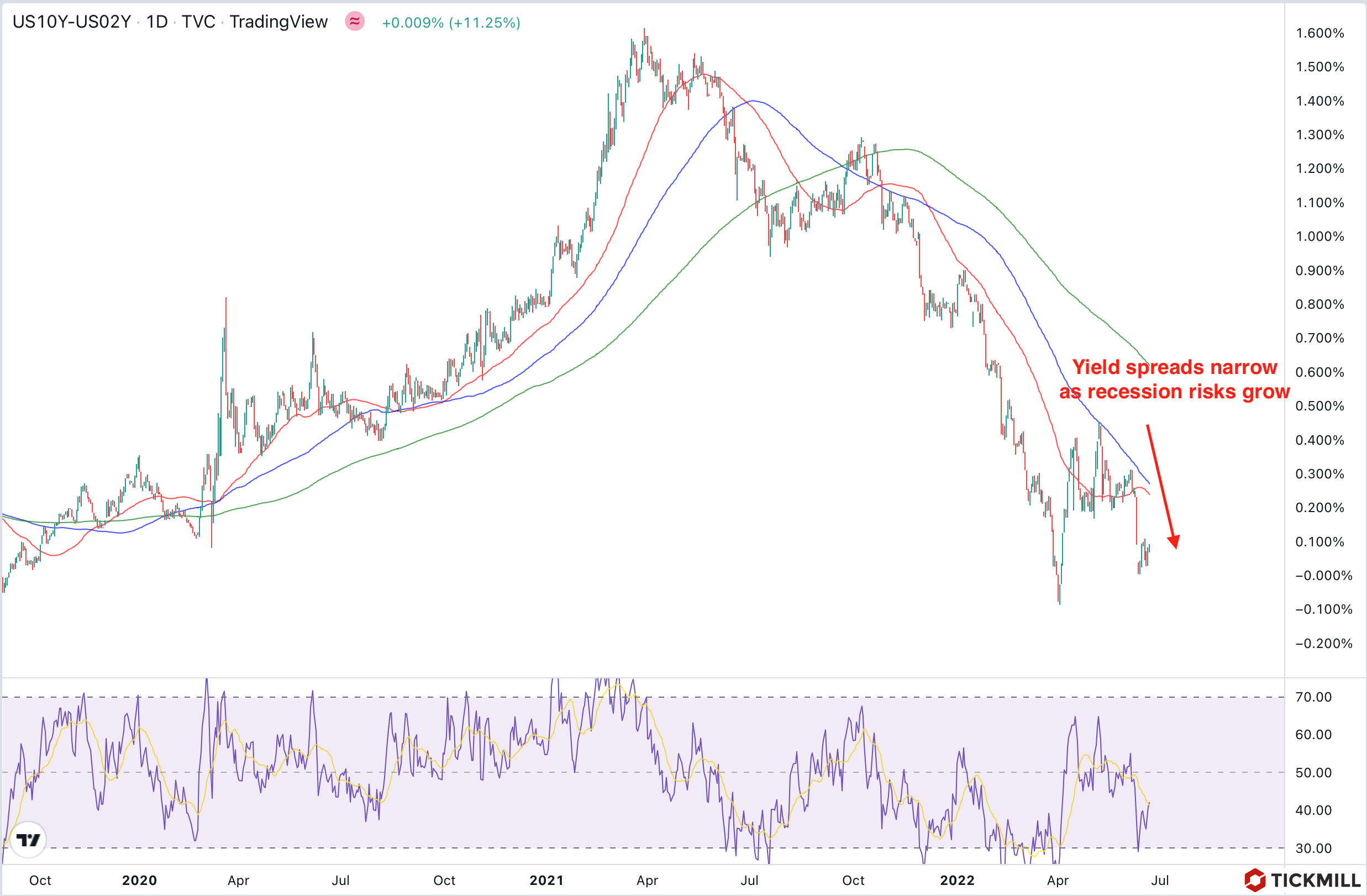
All in all, equity prices seem not have bottomed out, the dollar's medium-term rally has not run out of steam, and downward risk asset pressure will likely remain abound until the market begins to expect that the US Central Bank is ready to soften rhetoric in response to market participants' fears of a recession. Technically, the S&P 500 index is near the lower bound of the trend channel, which points to higher chance of a rebound, however, unlike previous movements towards the lower bound, market participants were less active in buying the dip intraday, so the price may try to test the level of 3600 and below in an attempt to elicit more powerful bullish response before we can talk about an upward correction:
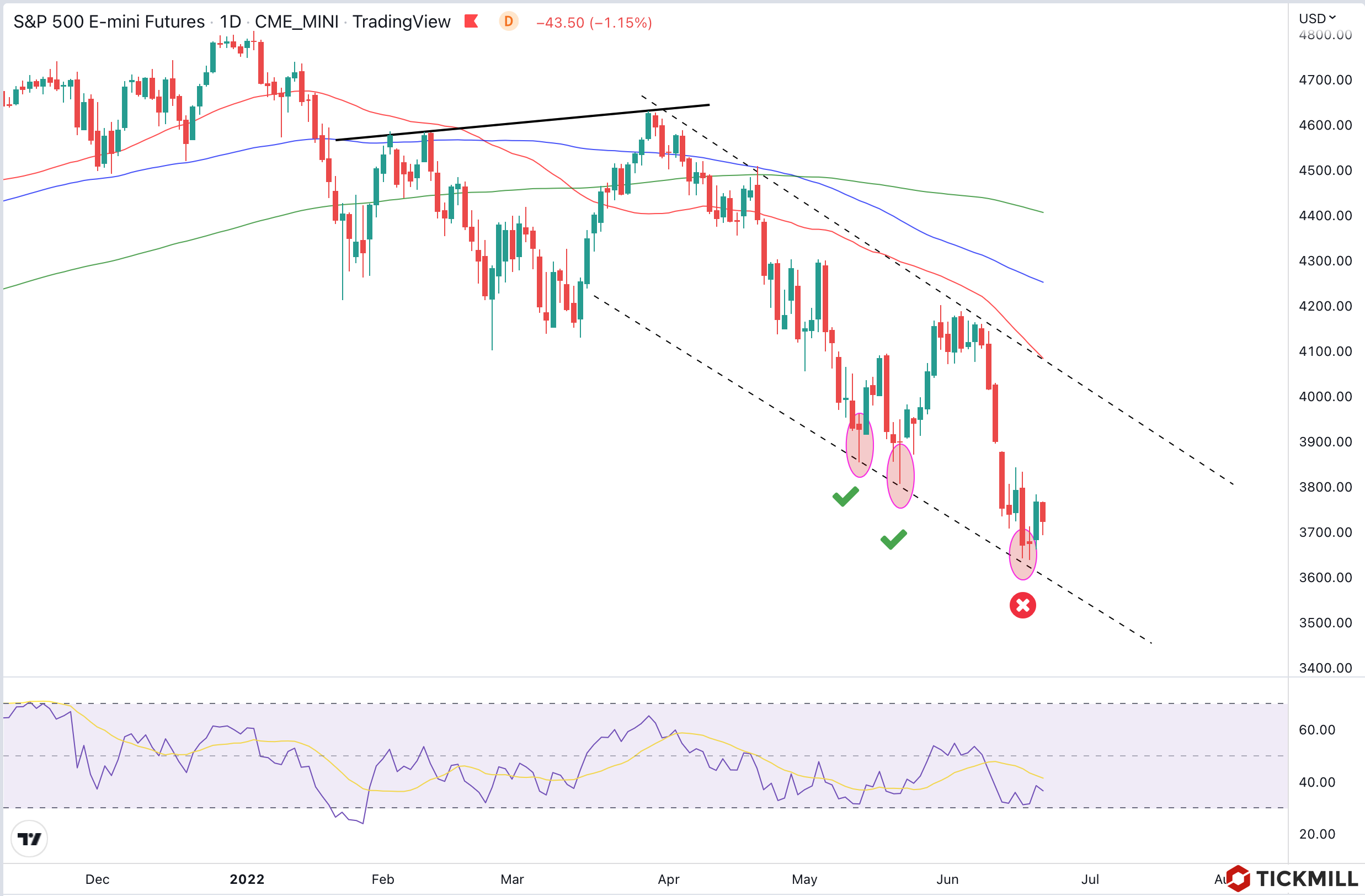
Disclaimer: The material provided is for information purposes only and should not be considered as investment advice. The views, information, or opinions expressed in the text belong solely to the author, and not to the author’s employer, organization, committee or other group or individual or company.
High Risk Warning: CFDs are complex instruments and come with a high risk of losing money rapidly due to leverage. 75% and 72% of retail investor accounts lose money when trading CFDs with Tickmill UK Ltd and Tickmill Europe Ltd respectively. You should consider whether you understand how CFDs work and whether you can afford to take the high risk of losing your money.
Risk assets traded in the red on Wednesday, with the dollar rebounding from its recent short-term downtrend as debates about impending recession successfully enters the mainstream. Several large investment banks have already estimated the chances of a recession starting from the 4th quarter of 2022 at more than 50%, which, against the backdrop of the central banks’ “no-tolerance” inflation policy, becomes an even more depressing forecast. Governments and central banks have practically no tools left to smooth out the recession: one way or another, their effect is reduced to creating positive demand shocks, which is unacceptable in conditions of high inflation and negative supply shocks.
The dollar index is again approaching multi-year highs as bearish factors are at play in both two key asset classes – stocks and bonds. Slightly negative dynamics is also observed in the sovereign segment of the debt market - bonds with 10-year maturity in the US and Germany offer a slightly lower yield than yesterday.
Of the latest economic updates, we can highlight the data on inflation in the UK. Headline monthly inflation was 0.7%, better than expected, consensus again underestimated producer price inflation, annual PPI of input prices reached 22.1% (forecast 19.4%), monthly PPI - 2.1%. UK inflation figures are the highest in 40 years:

Investors have not yet received a clear explanation from the British Central Bank what it will do with high inflation, at the last meeting there was a modest increase in rate by 25 basis points, there wasn’t any clue in the policy statement that the Central Bank will throw all its efforts into fighting inflation (as stated Fed), that’s why the inflation report made a negative impression on the pound, which today is more actively losing ground against the dollar compared to the European currency. GBPUSD is testing from above 1.22, mainly bearish sentiment for the pair will remain until the price remains below the resistance zone of 1.2320 -1.2380:

The oil market is showing a long-awaited positive momentum, with prices moving towards the $100 per barrel level, as fears of a subsidence in demand due to the threat of a recession seem to be beginning to outweigh the signals of a shortage on the global supply side. Lower prices allow us to expect a weakening of general inflation in the coming months and the markets will probably gradually begin to price in this important signal, however, in order to consolidate this optimism, it is necessary to see a softening stance on the side of central banks, primarily from the Fed.
Classic recession indicators confirm that pessimism is slowly starting to dominate sentiment. The spread between 10-year and 2-year US Treasuries is approaching zero again:

All in all, equity prices seem not have bottomed out, the dollar's medium-term rally has not run out of steam, and downward risk asset pressure will likely remain abound until the market begins to expect that the US Central Bank is ready to soften rhetoric in response to market participants' fears of a recession. Technically, the S&P 500 index is near the lower bound of the trend channel, which points to higher chance of a rebound, however, unlike previous movements towards the lower bound, market participants were less active in buying the dip intraday, so the price may try to test the level of 3600 and below in an attempt to elicit more powerful bullish response before we can talk about an upward correction:

Disclaimer: The material provided is for information purposes only and should not be considered as investment advice. The views, information, or opinions expressed in the text belong solely to the author, and not to the author’s employer, organization, committee or other group or individual or company.
High Risk Warning: CFDs are complex instruments and come with a high risk of losing money rapidly due to leverage. 75% and 72% of retail investor accounts lose money when trading CFDs with Tickmill UK Ltd and Tickmill Europe Ltd respectively. You should consider whether you understand how CFDs work and whether you can afford to take the high risk of losing your money.

